Industrial dining rooms have become increasingly popular in modern home design, offering a perfect blend of raw materials, functional aesthetics, and sophisticated style. This design approach embraces exposed architectural elements like brick walls, steel beams, and concrete surfaces while creating inviting spaces for dining and entertaining. The industrial style celebrates the beauty of unfinished materials and repurposed elements, transforming utilitarian features into striking focal points. Whether you're designing a loft apartment or adding industrial touches to a traditional home, these ideas will help you create a dining space that's both edgy and welcoming.
1. Industrial Dining Room with Exposed Brick Feature Wall
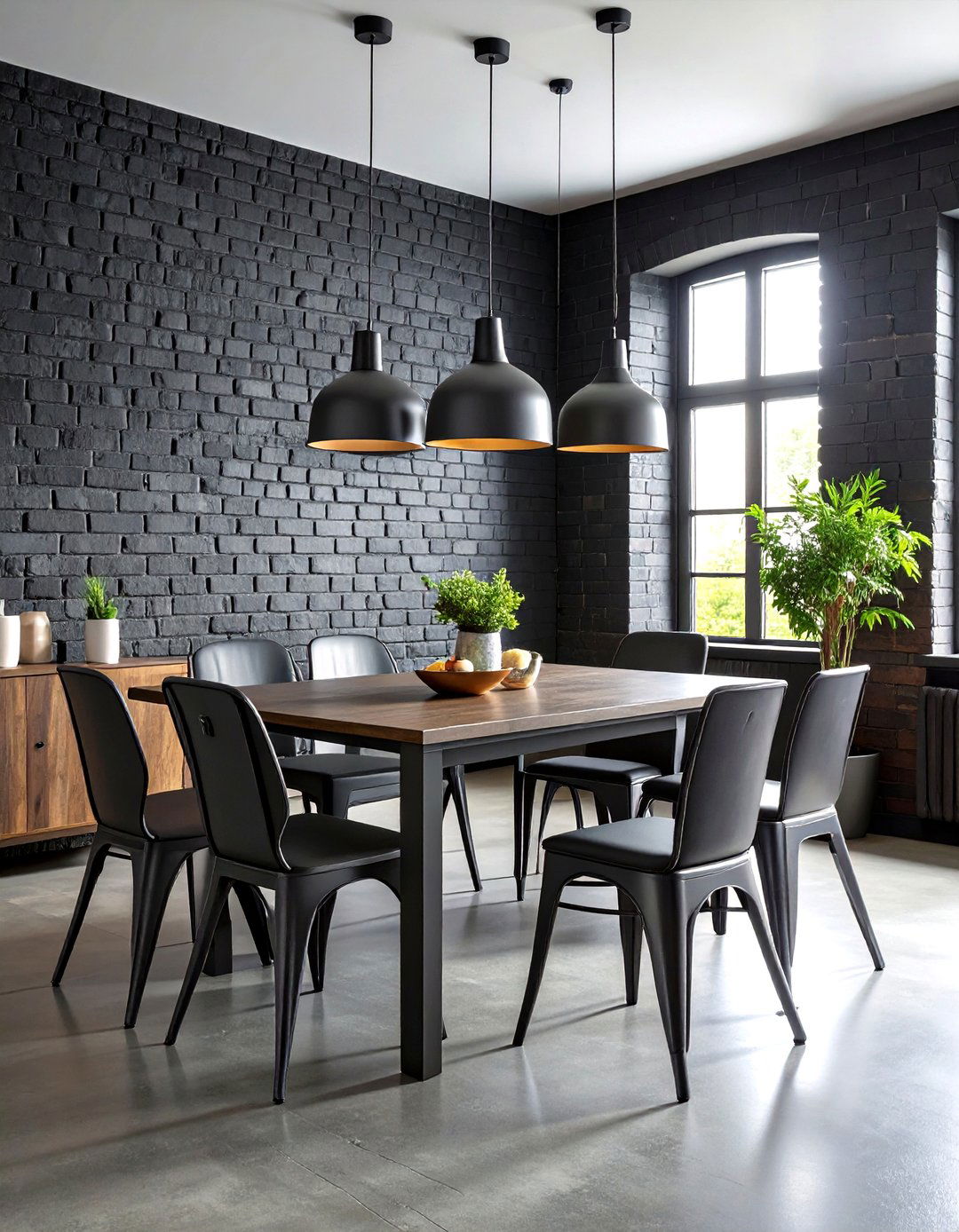
Creating a stunning focal point with exposed brick brings instant character and warmth to your industrial dining room. Raw brick walls provide textural interest and historical charm while serving as perfect backdrops for modern dining furniture. Consider painting the brick in charcoal gray or classic white to complement your color scheme while preserving the distinctive texture. The natural variations in brick create visual depth and pair beautifully with steel and wood elements. Position your dining table parallel to the brick wall to maximize the dramatic effect, and use strategic lighting to highlight the texture during evening meals.
2. Industrial Dining Room with Reclaimed Wood and Steel Table
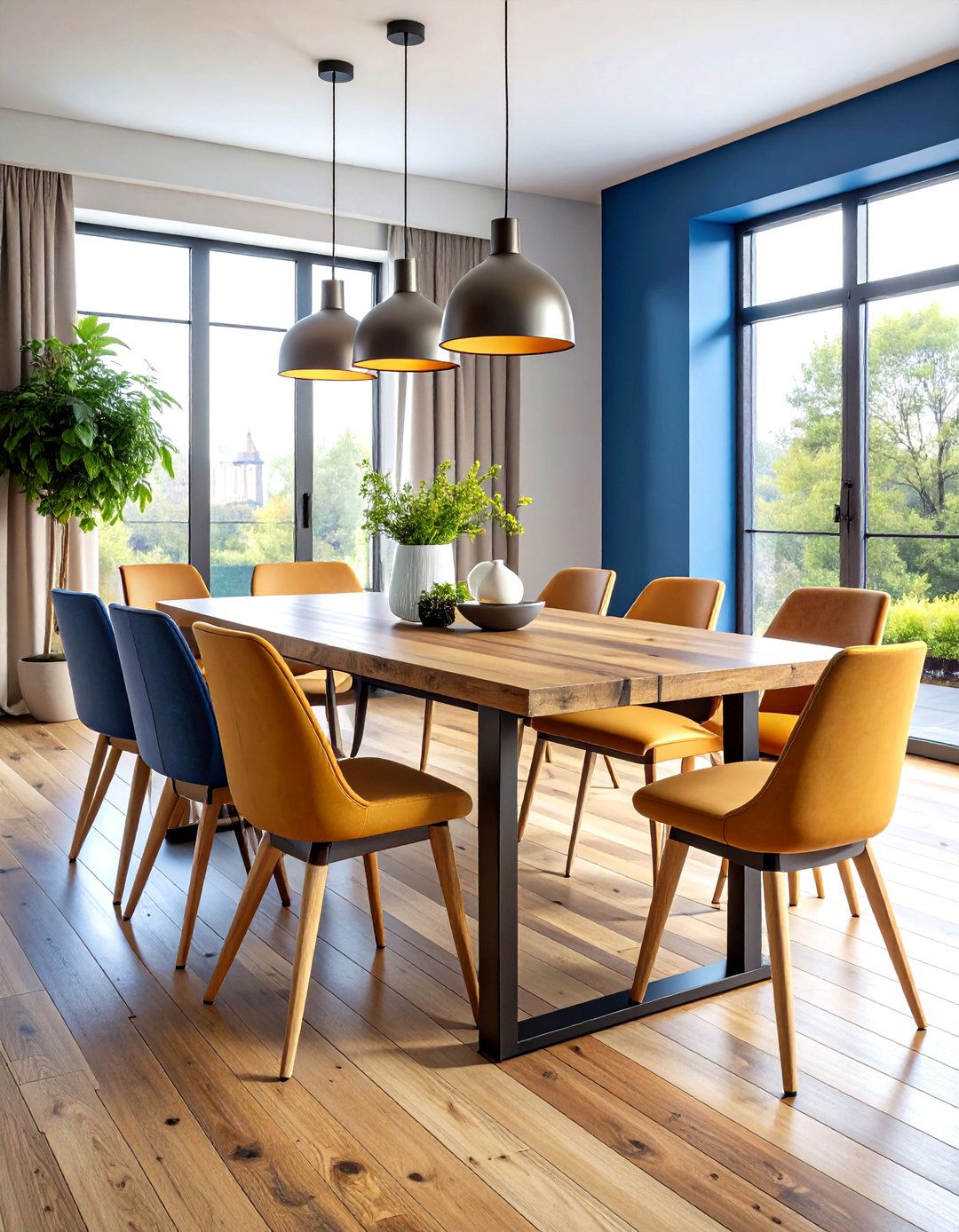
A reclaimed wood dining table with steel legs perfectly embodies industrial design principles by combining sustainability with robust aesthetics. The weathered character of salvaged wood tells a story while providing durability for daily use. Choose between H-shaped or U-shaped steel frames for different visual impacts, with blackened or raw steel finishes complementing the natural wood tones. This combination creates striking contrast while maintaining cohesive industrial styling. The table becomes a conversation piece that showcases both craftsmanship and environmental consciousness, making every meal feel special.
3. Industrial Dining Room with Edison Bulb Chandelier
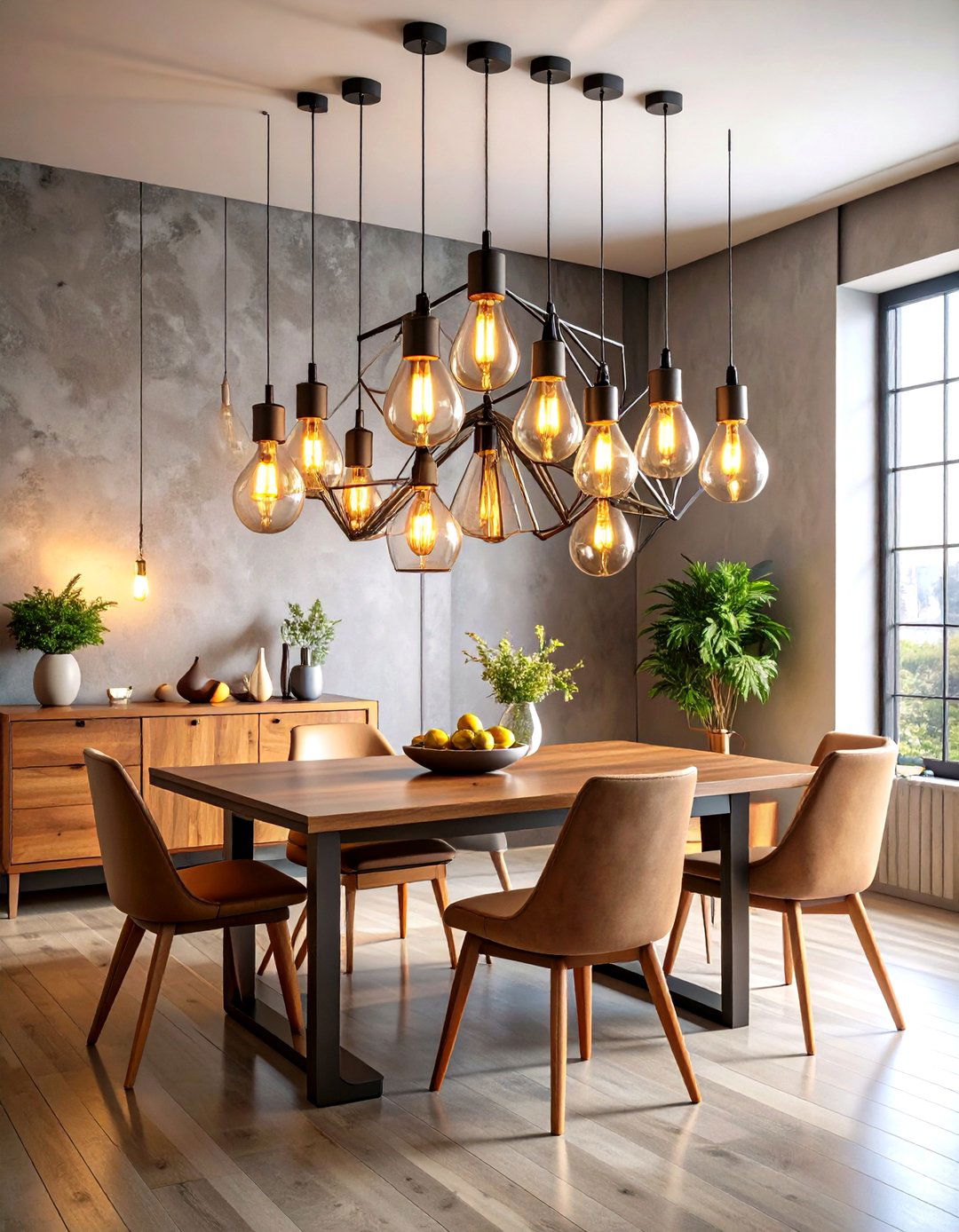
Transform your dining space with an Edison bulb chandelier that celebrates the beauty of visible filaments and warm illumination. These fixtures draw inspiration from early 20th-century lighting and feature minimalist metal frames that complement industrial aesthetics. Consider multiple Edison bulbs arranged in geometric patterns or suspended at varying heights for dynamic visual interest. The warm glow creates intimate ambiance perfect for dinner parties while maintaining the raw, unfinished look characteristic of industrial design. Position the chandelier approximately 30-36 inches above your dining table for optimal lighting and visual balance.
4. Industrial Dining Room with Concrete Dining Table
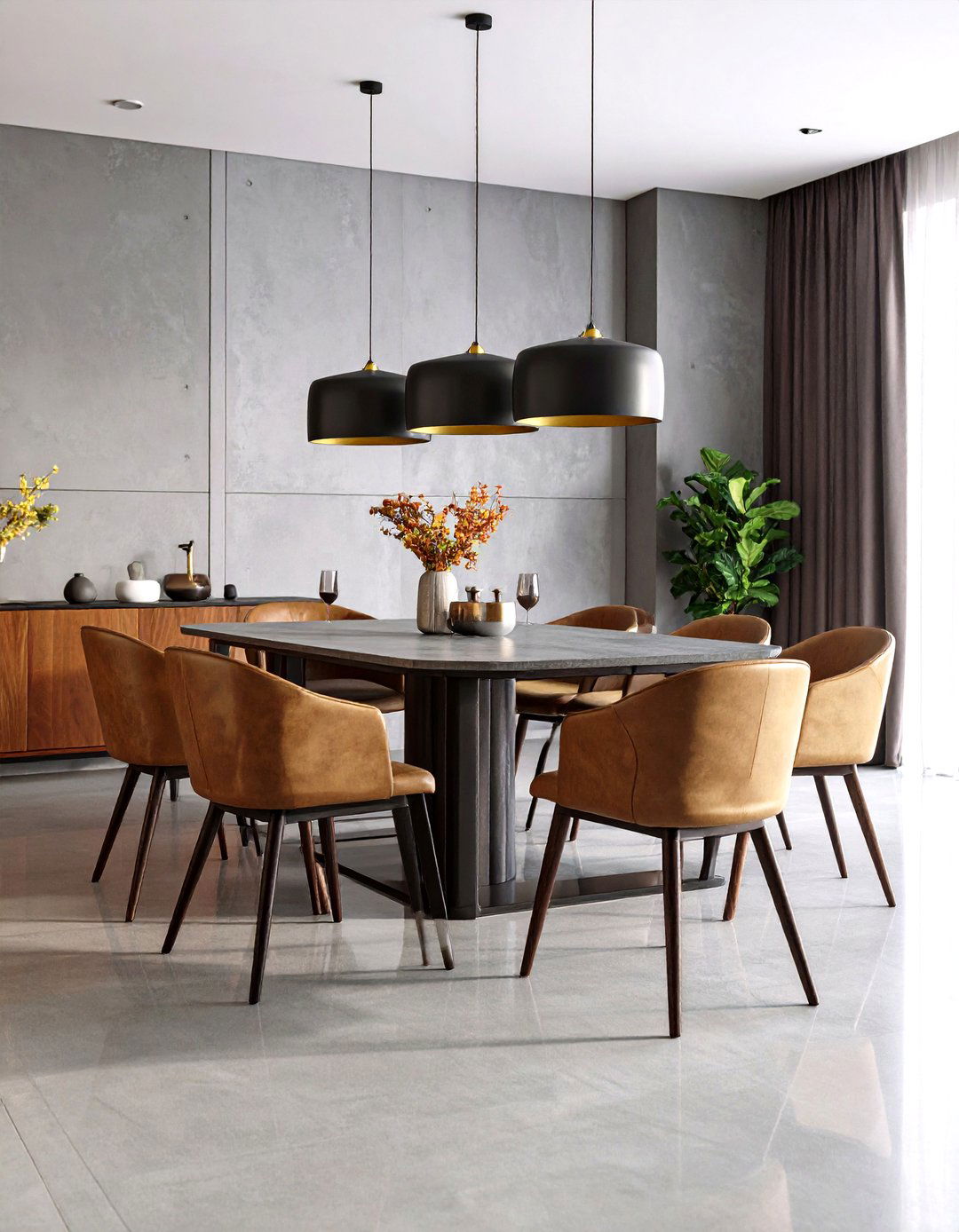
A concrete dining table makes a bold architectural statement while providing unmatched durability and modern appeal. Concrete offers clean lines and minimalistic design that suits industrial-themed spaces perfectly. The material's natural gray tones complement exposed brick walls and metal fixtures while creating a sophisticated focal point. Pair concrete tables with warm wood chairs or leather seating to soften the industrial edge. The smooth surface reflects light beautifully and requires minimal maintenance, making it both practical and stylish. Consider integrated bench seating along one side for a contemporary architectural approach.
5. Industrial Dining Room with Mixed Metal Seating
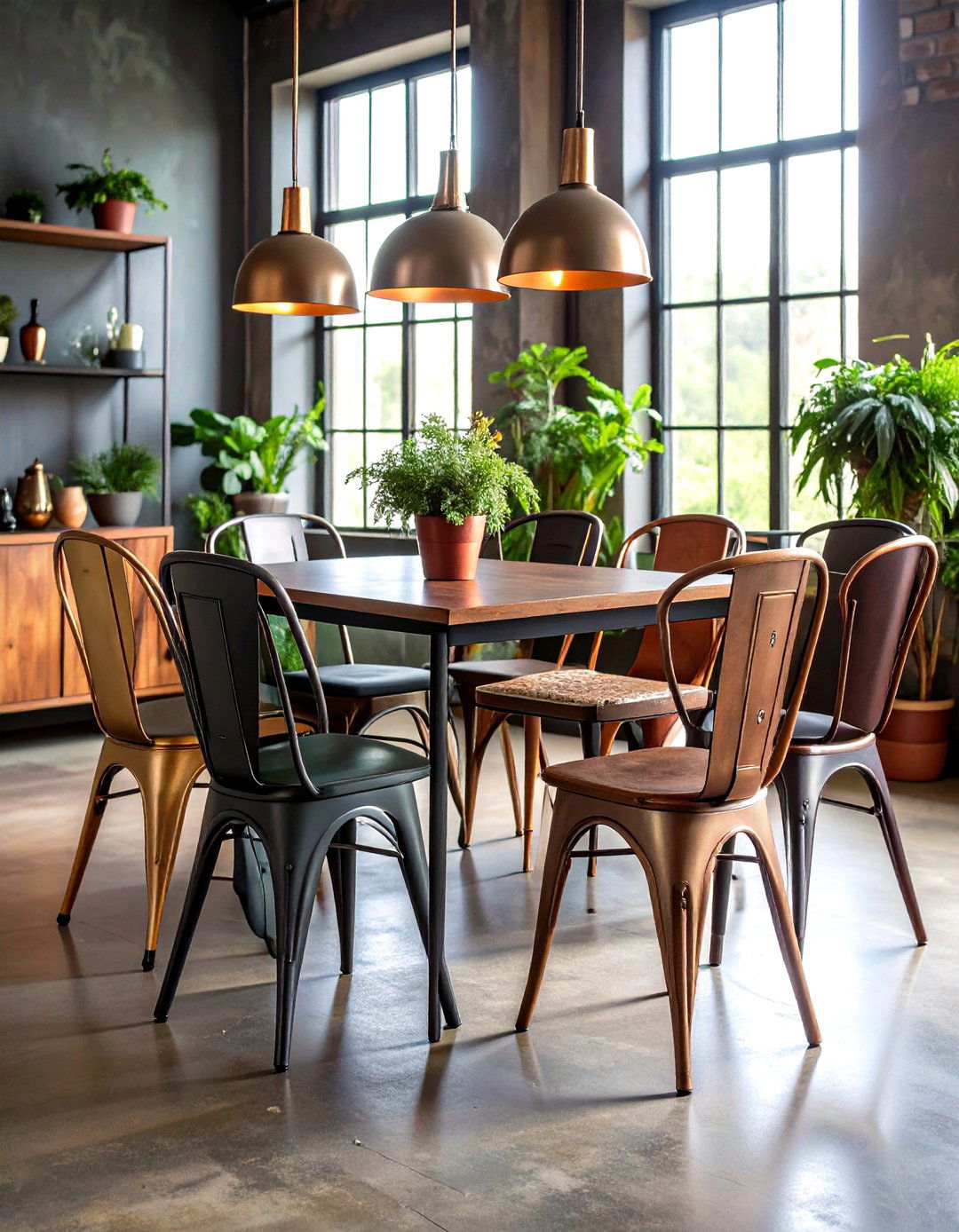
Creating visual interest through varied metal seating brings eclectic charm to your industrial dining room design. Mixing different metal finishes and chair styles adds personality while maintaining industrial aesthetics. Combine steel dining chairs with copper accents, or mix black metal frames with brass details for sophisticated contrast. This approach allows flexibility in sourcing furniture while creating a curated, collected-over-time appearance. Ensure cohesion by maintaining similar proportions and heights while varying textures and finishes. The result is a dining space that feels both intentional and effortlessly cool.
6. Industrial Dining Room with Exposed Ceiling Beams
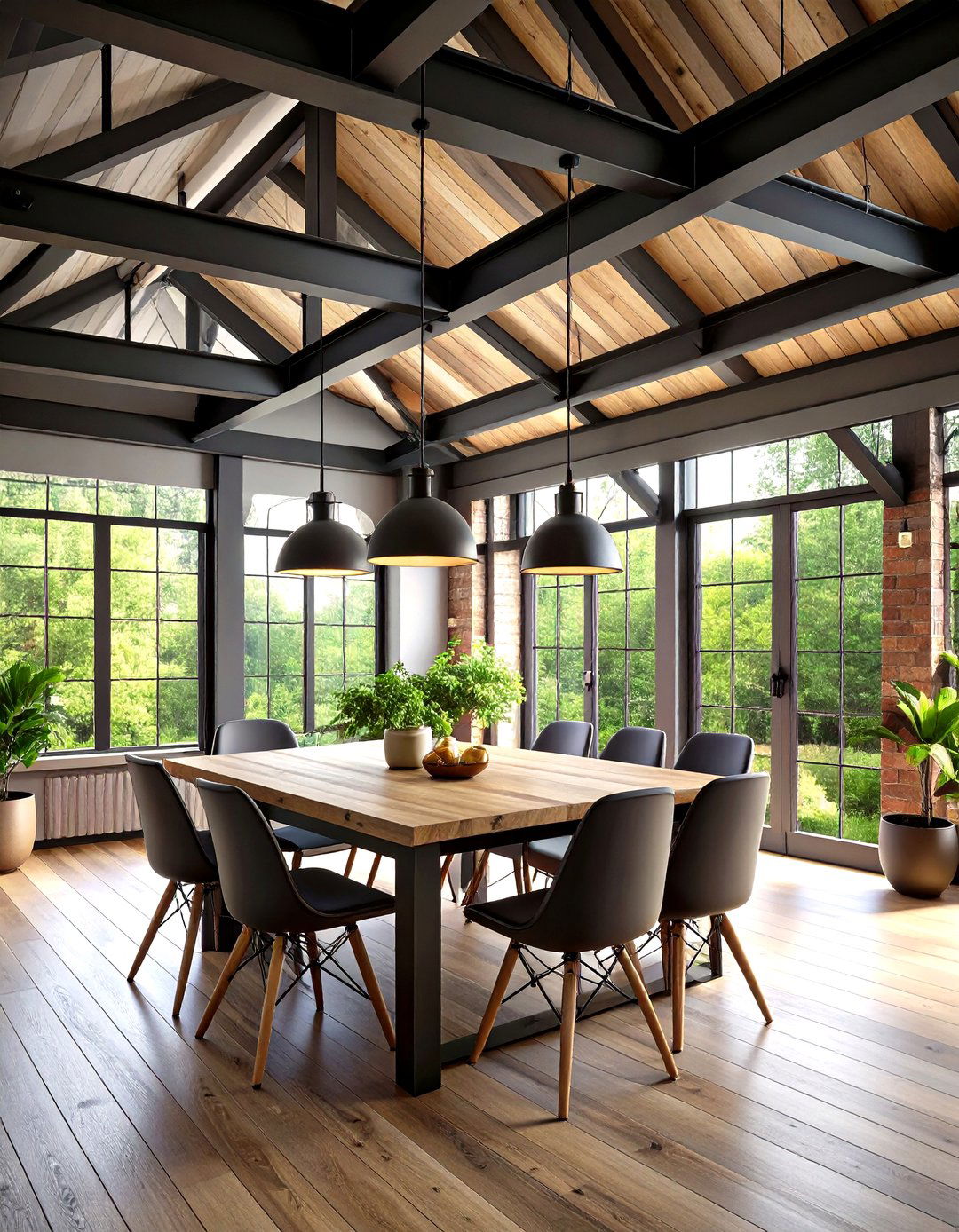
Exposed ceiling beams add architectural drama and emphasize the industrial aesthetic by showcasing structural elements. Paint beams in contrasting colors like black or dark gray to create visual weight and define the dining area. Steel beams provide authentic industrial character, while wooden beams add warmth and texture. Consider suspending pendant lights from beams to create intimate lighting zones over your dining table. The vertical lines draw eyes upward, making spaces feel larger while maintaining the raw, unfinished industrial appeal.
7. Industrial Dining Room with Glass and Metal Pendant Lighting

Transparent glass pendant lights maintain visual openness while providing focused task lighting over your industrial dining table. Glass jar pendants offer strong industrial vibes without visually weighing down the room. Choose clear glass shades in geometric shapes or vintage-inspired mason jar styles for authentic industrial appeal. Metal hardware in black, brass, or aged bronze complements the glass while providing structural interest. Group pendants at varying heights for dynamic lighting effects, or use matching fixtures for clean, symmetrical design. The transparency allows natural light to flow while evening illumination creates warm ambiance.
8. Industrial Dining Room with Pipe Element Accents
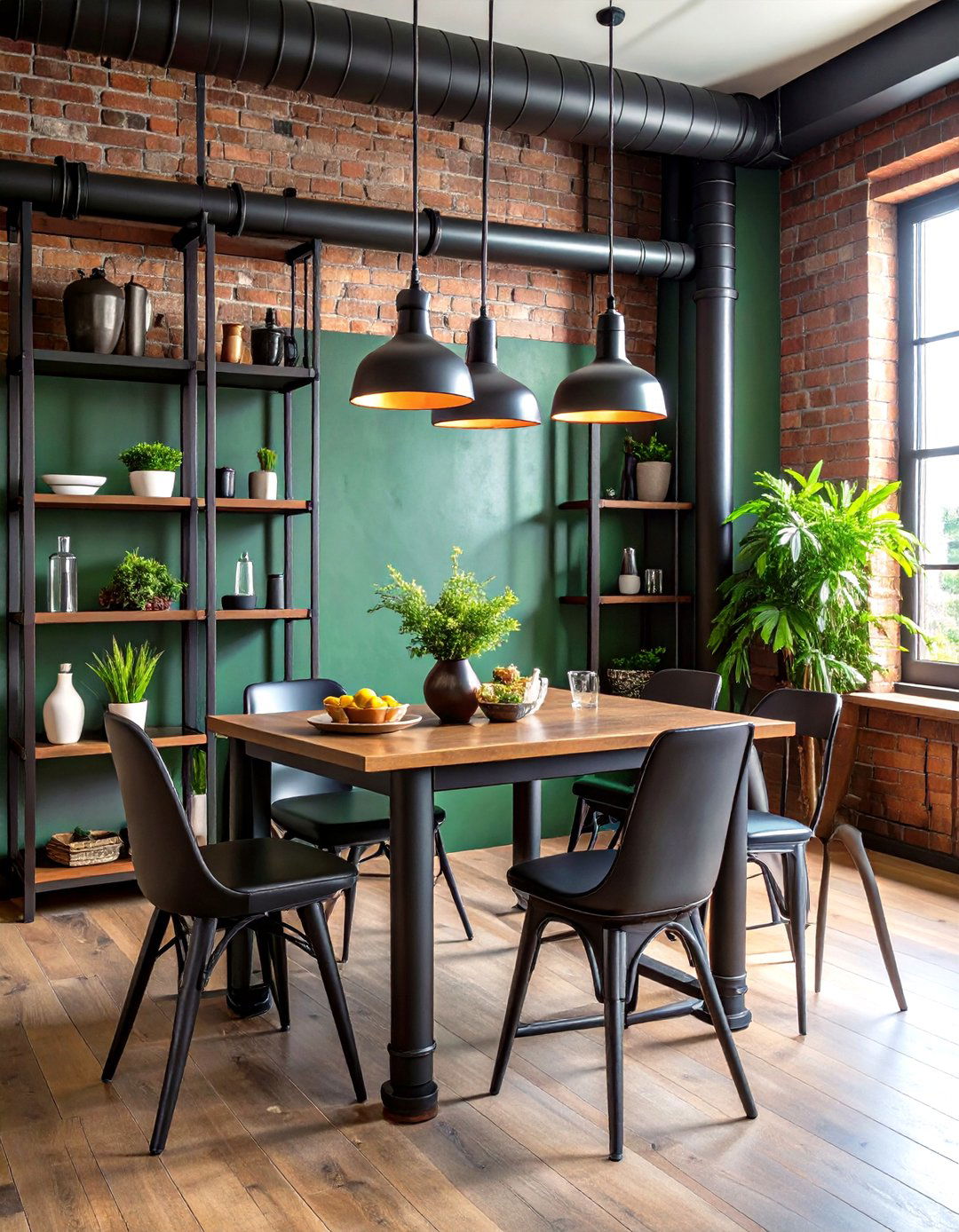
Incorporating visible pipes as design elements celebrates industrial heritage while adding functional character to your dining space. Use black iron pipes as table legs, shelving supports, or decorative wall features that complement the utilitarian aesthetic. Pipe elements throughout the house create consistent industrial theming. Consider pipe-framed mirrors, hanging pot racks, or custom shelving units that showcase dishes and glassware. The dark metal tones provide strong visual anchoring while maintaining the raw, unfinished appearance essential to industrial design. These elements cost-effectively add authentic industrial character.
9. Industrial Dining Room with Minimalist Design Approach
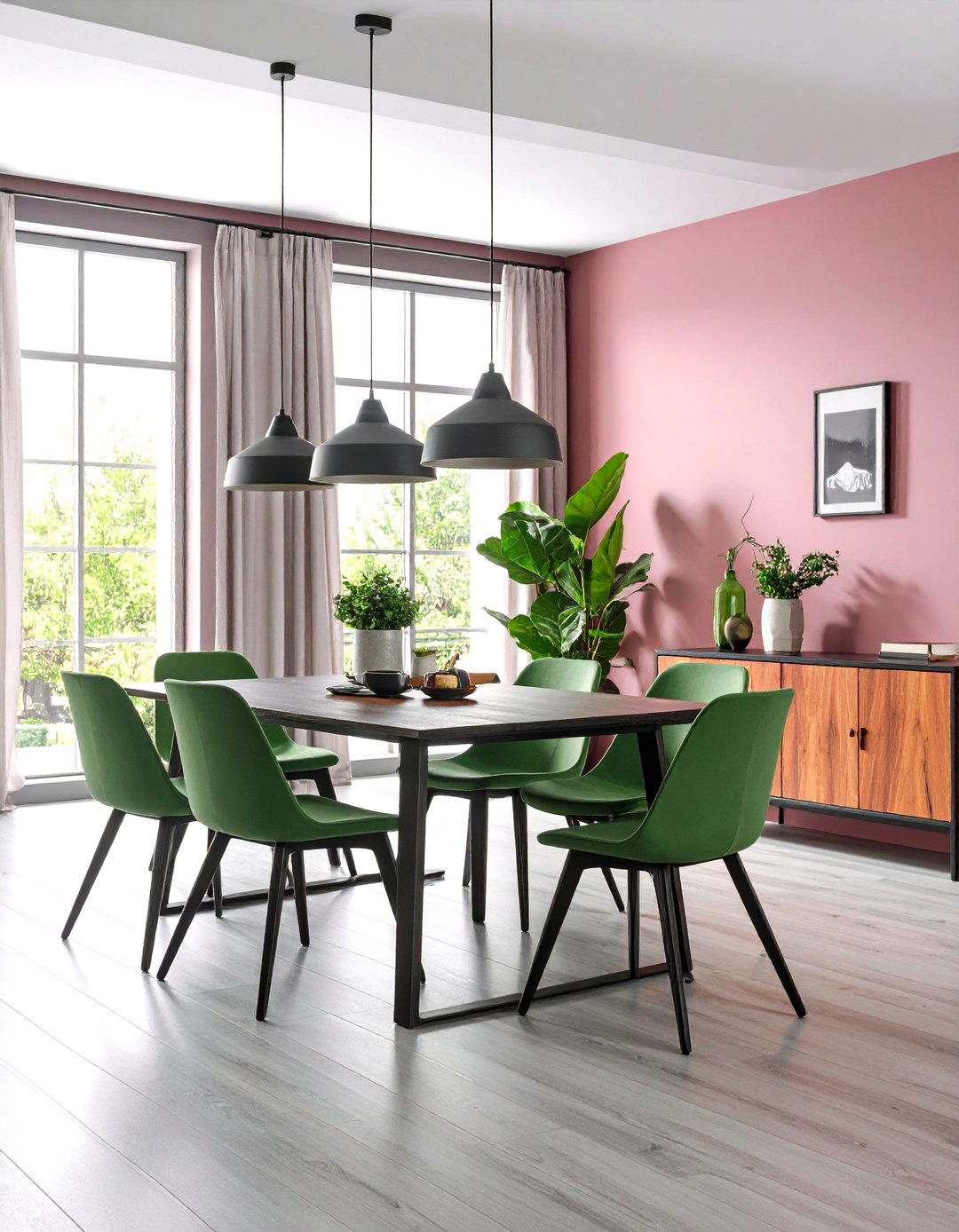
Embrace clean lines and uncluttered spaces with a minimalist industrial dining room that emphasizes quality over quantity. Minimalist aesthetics emphasize clean lines and uncluttered spaces while maintaining functionality. Choose furniture with simple geometric forms in materials like steel, concrete, and natural wood. Limit color palettes to neutrals—blacks, whites, grays, and warm wood tones—for sophisticated cohesion. Focus on one statement piece, like a dramatic light fixture or oversized artwork, while keeping other elements understated. This approach creates calming environments perfect for intimate dinners and family gatherings.
10. Industrial Dining Room with Open Floor Plan Integration
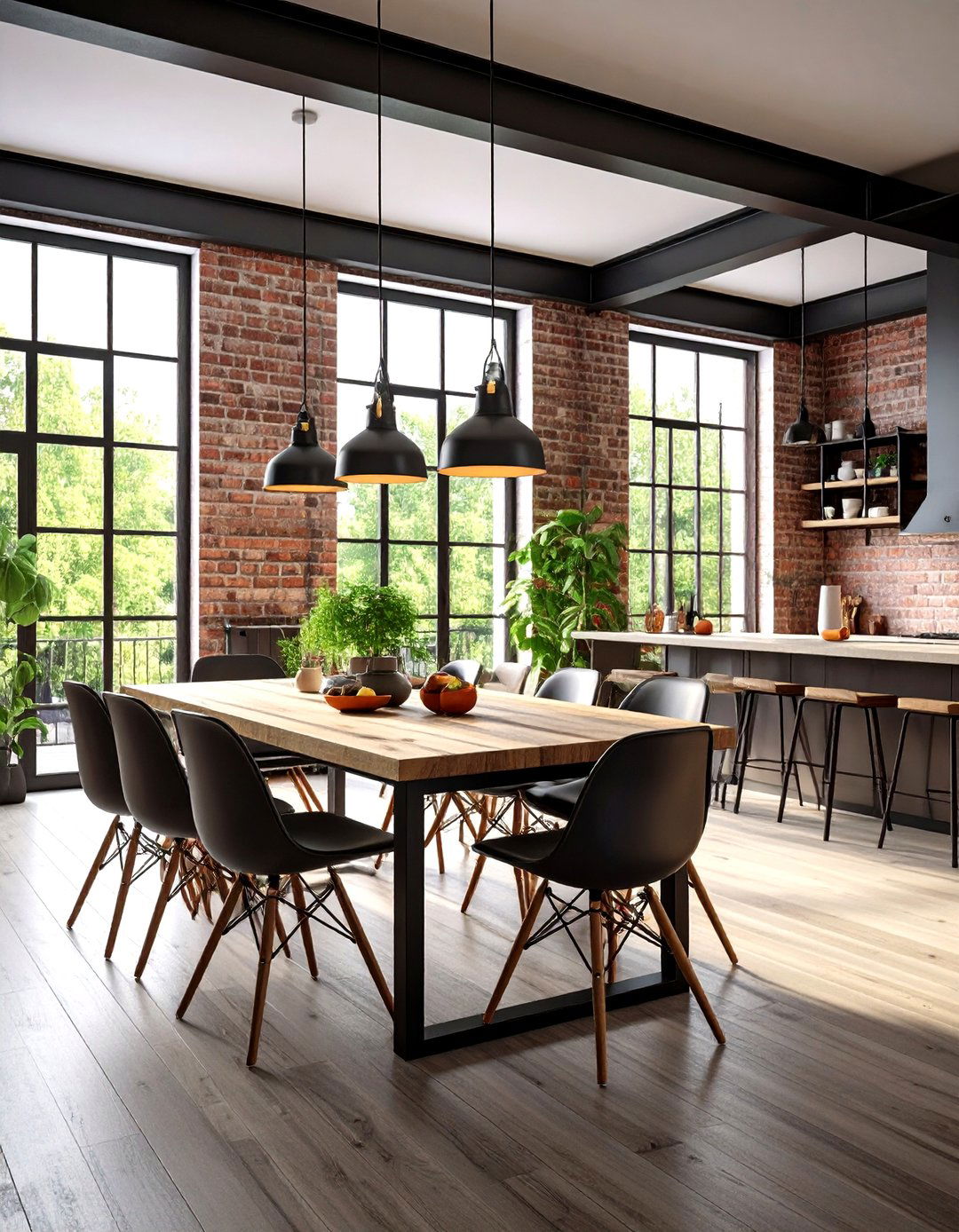
Seamlessly integrate dining spaces with living rooms and kitchens to create cohesive flow throughout the home. Open-concept industrial dining rooms feel larger while encouraging social interaction during meals and entertaining. Use consistent materials like exposed brick, steel fixtures, and concrete floors throughout connected spaces for visual unity. Define the dining area with a statement chandelier or area rug while maintaining sight lines to adjacent rooms. This layout maximizes natural light flow and creates flexible spaces for various activities while preserving industrial design continuity.
11. Industrial Dining Room with Vintage and Modern Mix
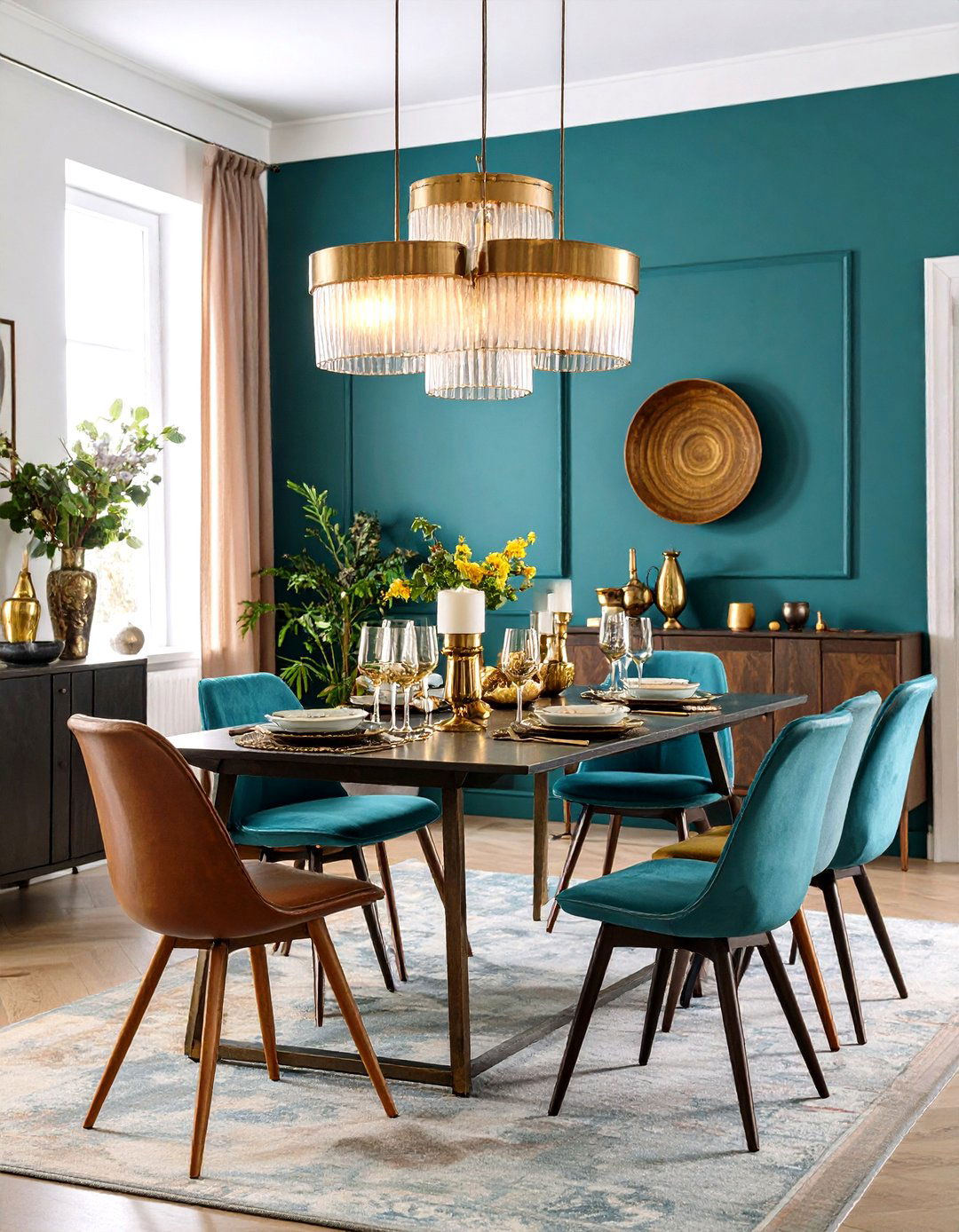
Mixing modern and vintage elements creates visually interesting spaces that tell stories through carefully curated pieces. Pair sleek contemporary dining tables with classic vintage chairs for striking contrast. Incorporate antique industrial artifacts like pulleys, gears, or factory lighting alongside modern amenities. This approach adds personality and warmth to potentially stark industrial spaces while maintaining authentic character. Hunt for authentic vintage pieces at antique stores or repurpose industrial equipment for unique decorative elements. The result is sophisticated eclecticism that feels both current and timeless.
12. Industrial Dining Room with Statement Art Display
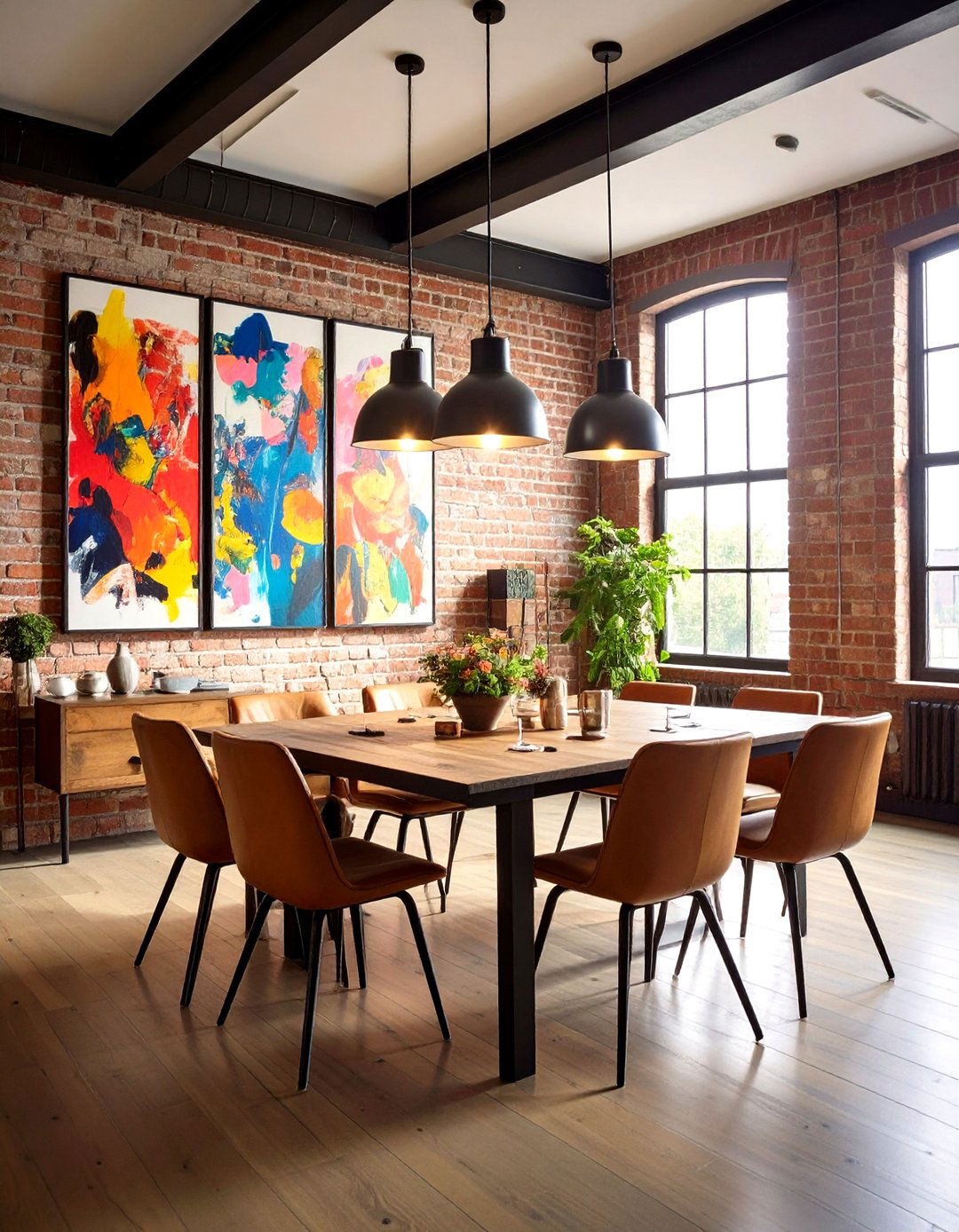
Transform bare industrial walls into gallery spaces with bold artwork that complements the raw aesthetic. Statement art pieces serve as conversation starters during meals while expressing personal style. Choose large-scale abstract pieces, photography, or industrial-themed artwork that harmonizes with your color scheme. Metal frames or exposed mounting hardware enhance the industrial aesthetic while properly showcasing artwork. Consider creating gallery walls with mixed media pieces that incorporate materials like metal, wood, and glass. Proper lighting ensures artwork remains visible during evening dining while contributing to overall ambient lighting.
13. Industrial Dining Room with Concrete Floor Design
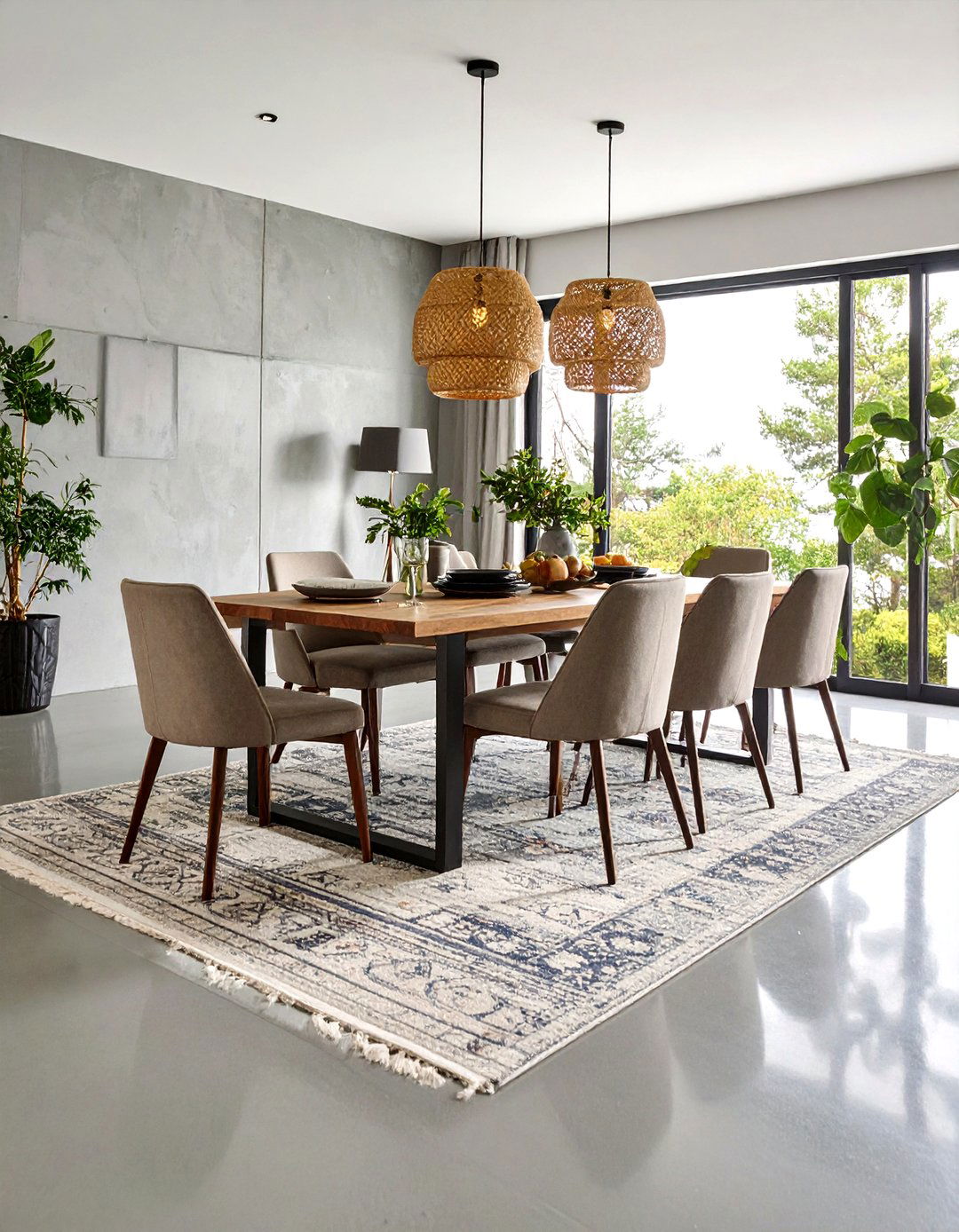
Polished concrete floors provide durable, low-maintenance surfaces that perfectly complement industrial dining room aesthetics. The smooth, reflective surface amplifies natural light while providing neutral backdrop for furniture and decor. Concrete floors are commonly featured in industrial kitchen/dining room combinations. Consider decorative scoring patterns or integral color options for added visual interest without compromising the clean industrial look. Concrete floors pair beautifully with area rugs that define the dining space while adding warmth and texture. The material's thermal mass helps regulate room temperature naturally.
14. Industrial Dining Room with Multi-Functional Furniture

Multi-functional furniture maximizes space efficiency with pieces like expandable tables and storage benches. Choose dining tables with built-in storage, expandable leaves, or convertible functions that adapt to different needs. Industrial-style benches with hidden storage provide flexible seating while organizing dining accessories. Consider rolling carts that serve as both bar stations and additional serving space during entertaining. This approach maximizes functionality in smaller industrial dining rooms while maintaining clean, uncluttered aesthetics essential to the style.
15. Industrial Dining Room with Natural Light Maximization
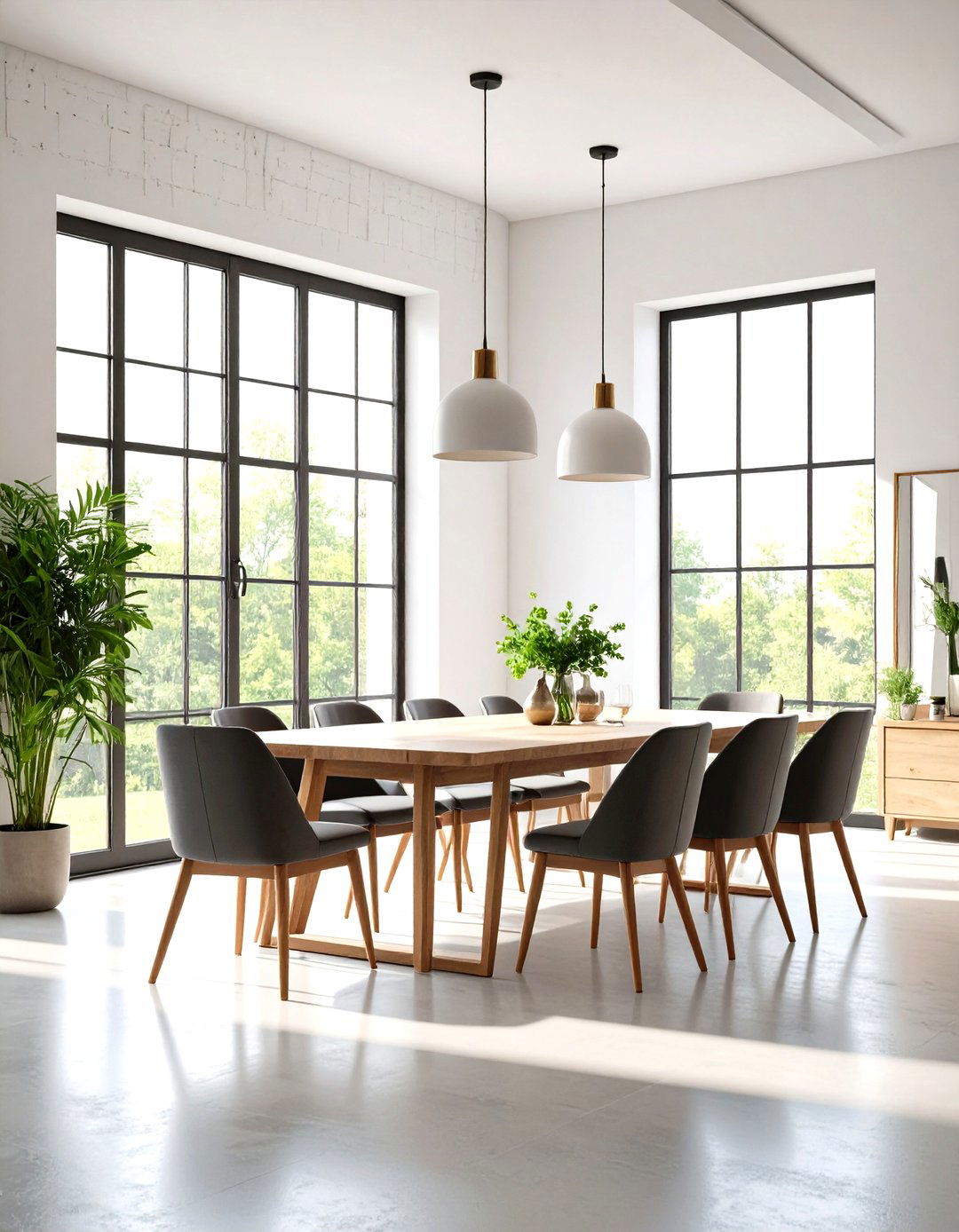
Large windows and strategic placement maximize natural light to soften the potentially harsh industrial aesthetic. Double-height spaces with enormous skylights create jaw-dropping visual impact. Remove heavy window treatments in favor of minimal blinds or bare windows that emphasize architectural elements. Position dining tables near windows to take advantage of natural illumination during daytime meals. Consider adding mirrors strategically to reflect and amplify available light throughout the space. The interplay between natural light and industrial materials creates dynamic environments that change throughout the day.
16. Industrial Dining Room with Textured Wall Treatments
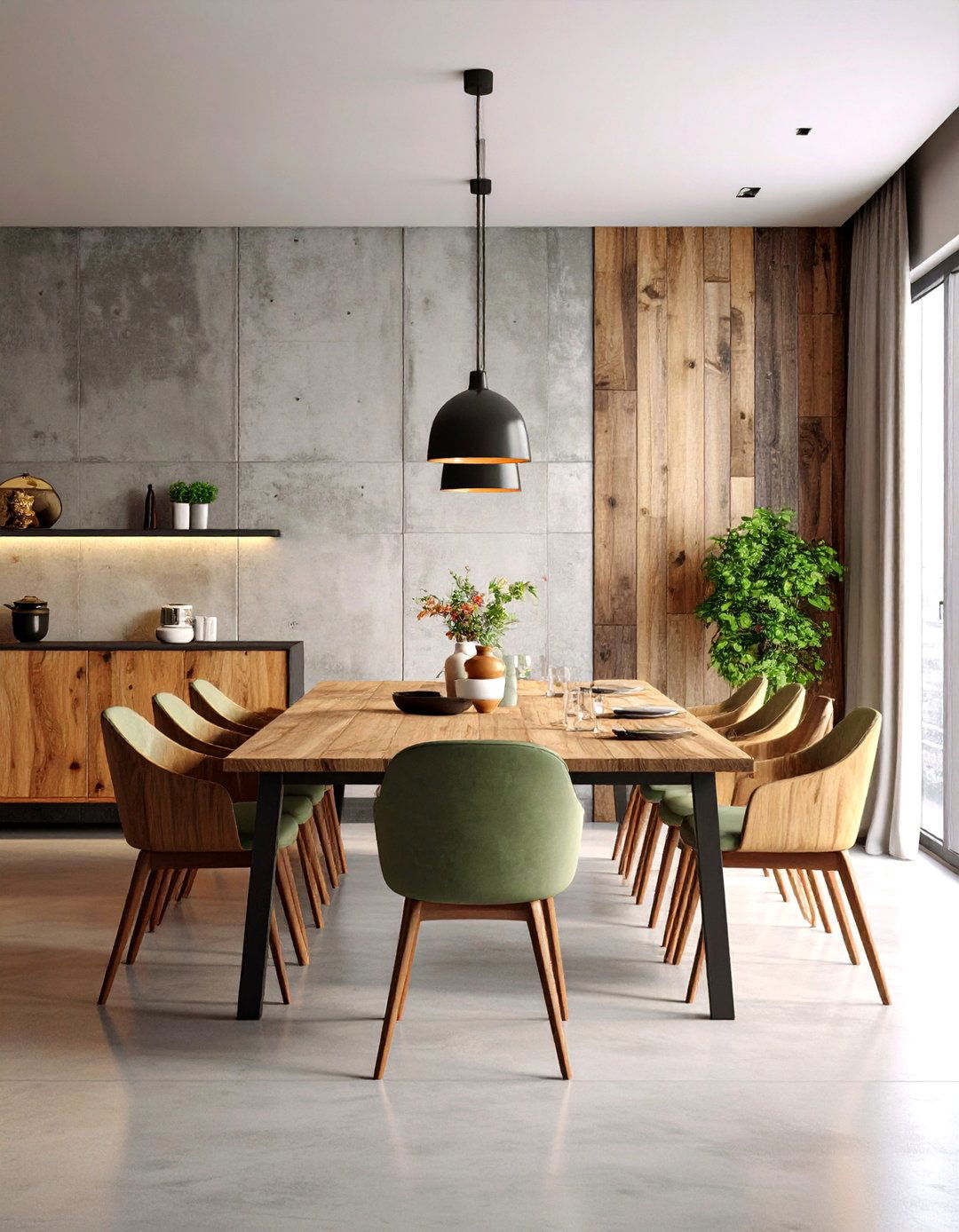
Beyond exposed brick, explore various textured wall treatments that enhance industrial character while adding visual interest. Textured walls bring depth and character to dining spaces. Consider concrete panels, reclaimed wood planking, or metal sheeting as accent walls. Shiplap provides industrial farmhouse fusion while maintaining rustic character. These treatments create focal points behind dining tables or throughout entire rooms for dramatic effect. Choose textures that complement your color scheme while adding tactile interest that invites closer inspection.
17. Industrial Dining Room with Metal and Wood Chair Combinations
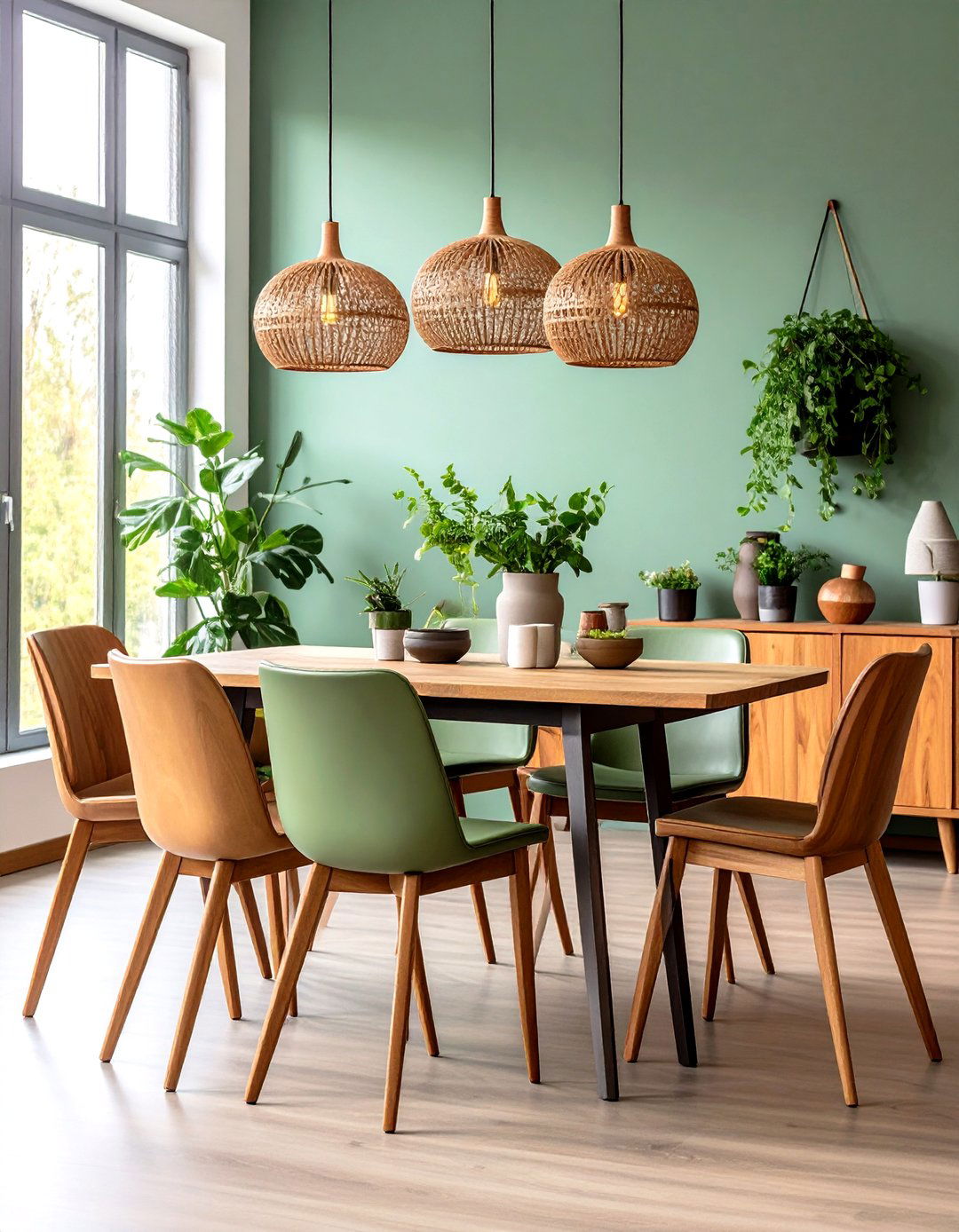
Create dynamic seating arrangements by combining different chair styles that share industrial DNA. Metal and wood dining chairs bring industrial modern feel to farmhouse-inspired spaces. Mix steel frames with wooden seats, or alternate between different metal finishes for visual variety. This approach allows flexibility in sourcing while creating collected-over-time aesthetics. Ensure chairs maintain similar proportions and heights for functional dining while providing personality through varied materials and designs. The combination softens stark industrial elements while maintaining authentic character.
18. Industrial Dining Room with Smart Technology Integration
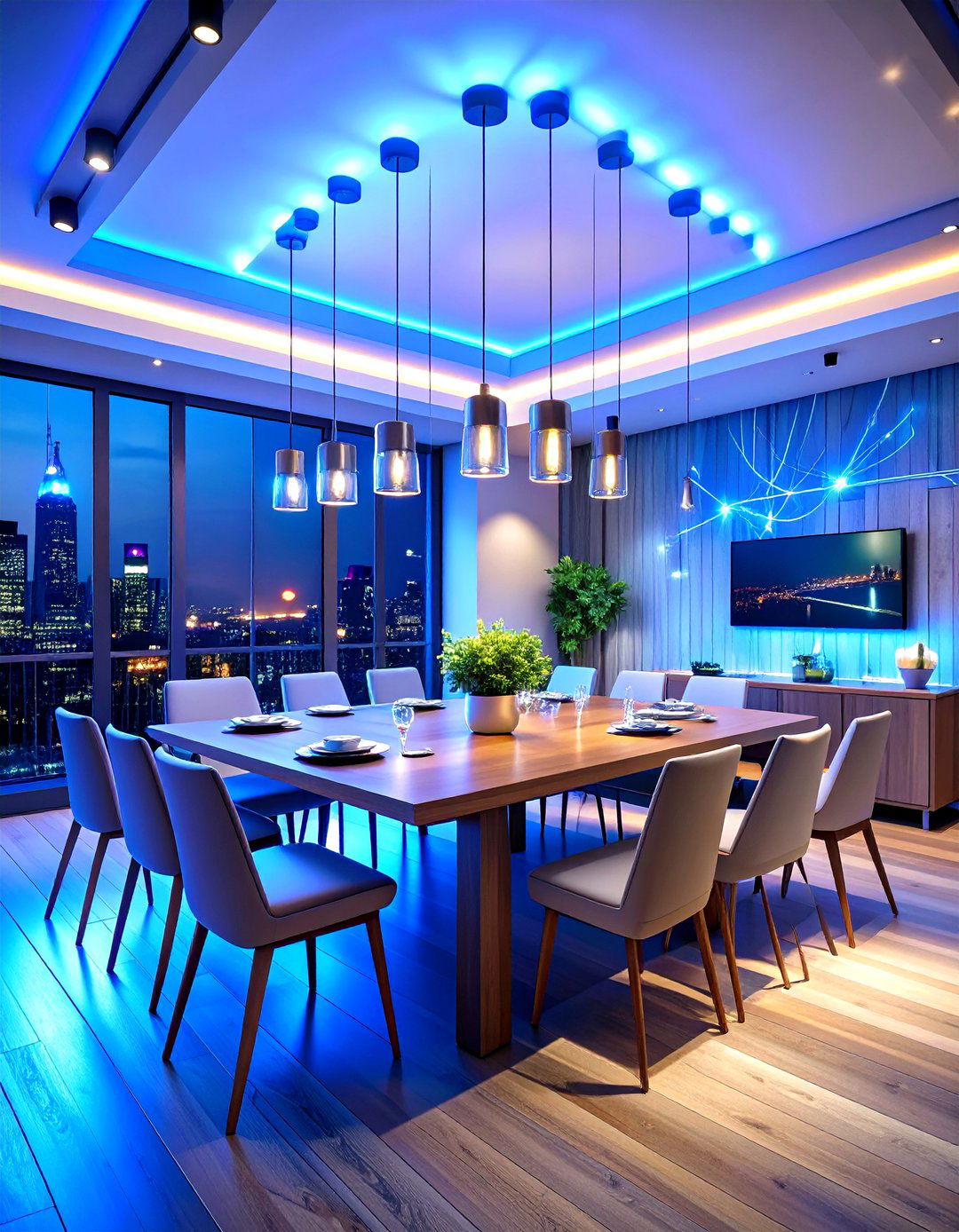
Smart technology enhances dining rooms with controllable lighting and convenience features. Install smart dimmable lights that adjust throughout the day, from bright task lighting for morning meals to intimate evening ambiance. Smart plugs and voice controls add convenience without compromising industrial aesthetics. Choose technology with clean lines and minimal visual impact that integrates seamlessly with raw materials. Hidden wiring and wireless devices maintain the uncluttered industrial look while providing modern functionality. This integration creates dining spaces that feel both cutting-edge and authentically industrial.
19. Industrial Dining Room with Color Accent Strategy
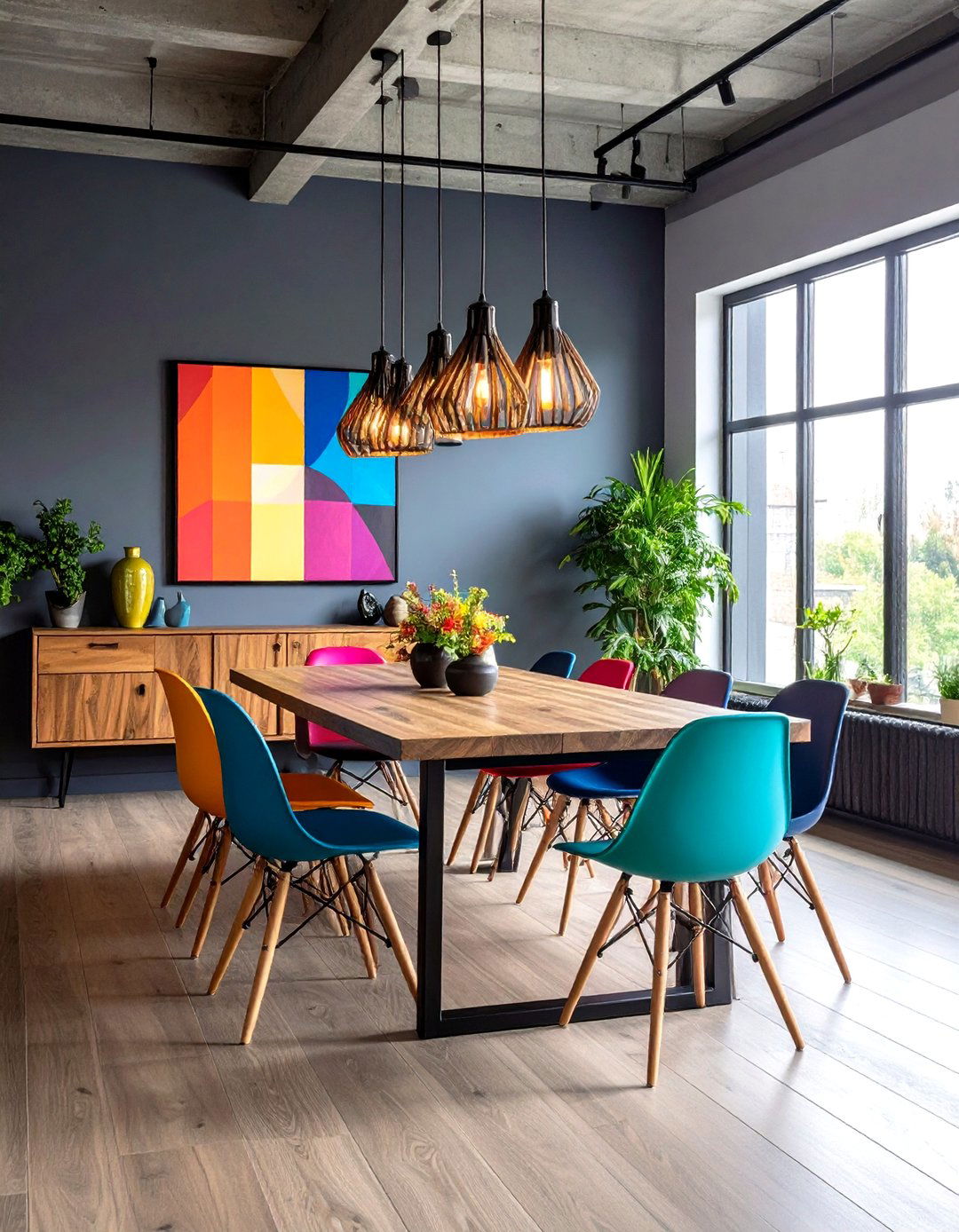
While industrial design typically emphasizes neutral palettes, strategic color accents add personality and warmth to dining spaces. Single bright accent pieces stand out as focal points against predominantly neutral backgrounds. Consider one vibrant chair, colorful artwork, or bold light fixture that energizes the space without overwhelming the industrial aesthetic. Deep blues, rich greens, or warm oranges complement steel and wood materials beautifully. This approach allows seasonal updates or personal expression while maintaining the sophisticated restraint characteristic of industrial design.
20. Industrial Dining Room with Sustainable Material Focus
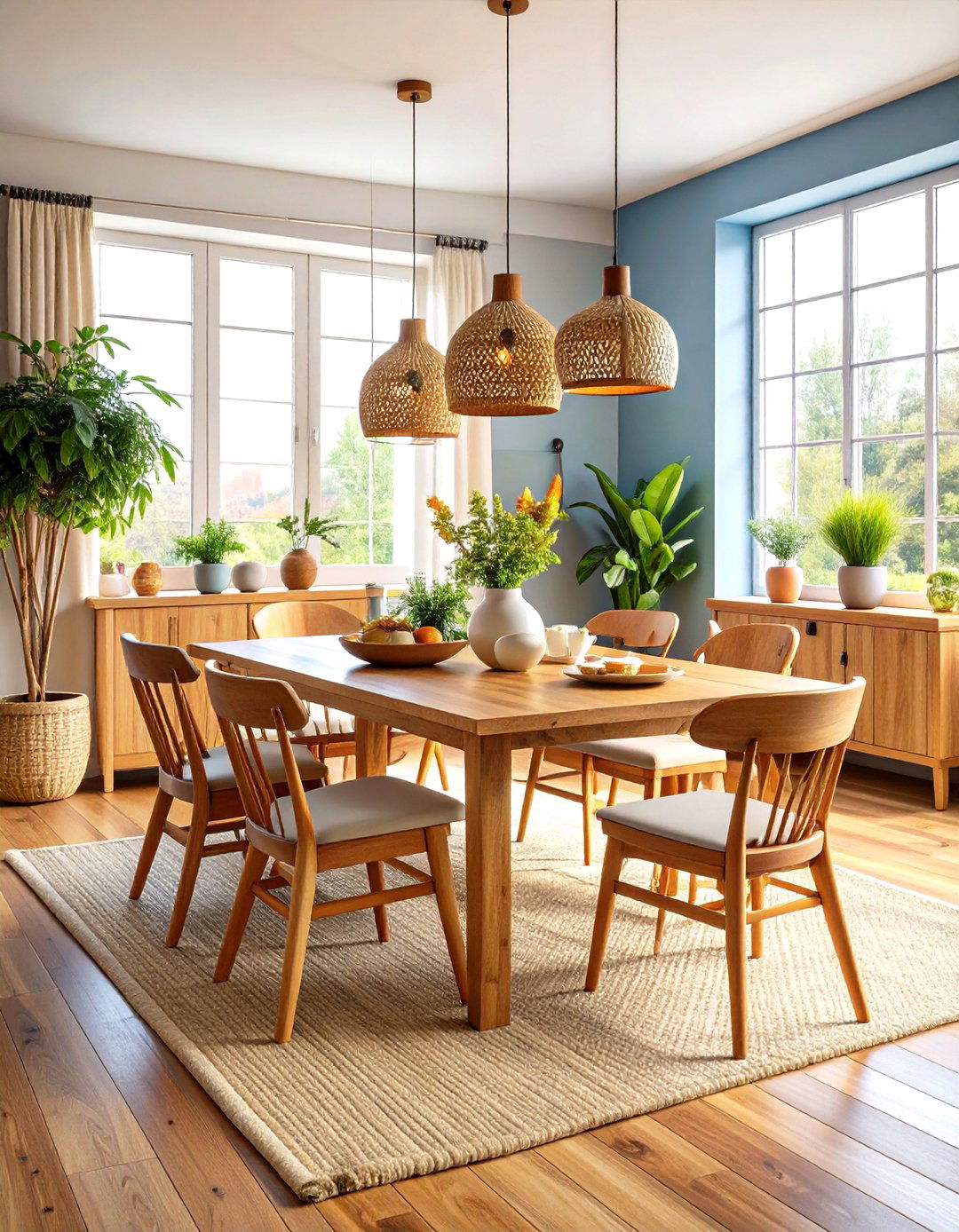
Emphasize environmental consciousness through sustainable material choices that align with industrial design principles. Reclaimed wood and sustainably sourced materials provide eco-friendly options without compromising style. Choose furniture made from recycled steel, reclaimed barn wood, or responsibly harvested timber. Vintage and antique pieces reduce environmental impact while adding authentic character. Consider locally sourced materials to minimize transportation impacts while supporting regional craftspeople. This approach creates dining rooms that feel good ethically while maintaining the raw, honest aesthetic that defines industrial design.
Conclusion:
Industrial dining rooms successfully blend raw materials with sophisticated design to create spaces that are both functional and visually striking. By incorporating elements like exposed brick walls, reclaimed wood tables, Edison bulb lighting, and mixed metal finishes, you can achieve authentic industrial character while maintaining comfort and warmth. Whether you choose minimalist approaches or eclectic vintage combinations, the key lies in celebrating honest materials and architectural elements that create lasting, memorable dining experiences.


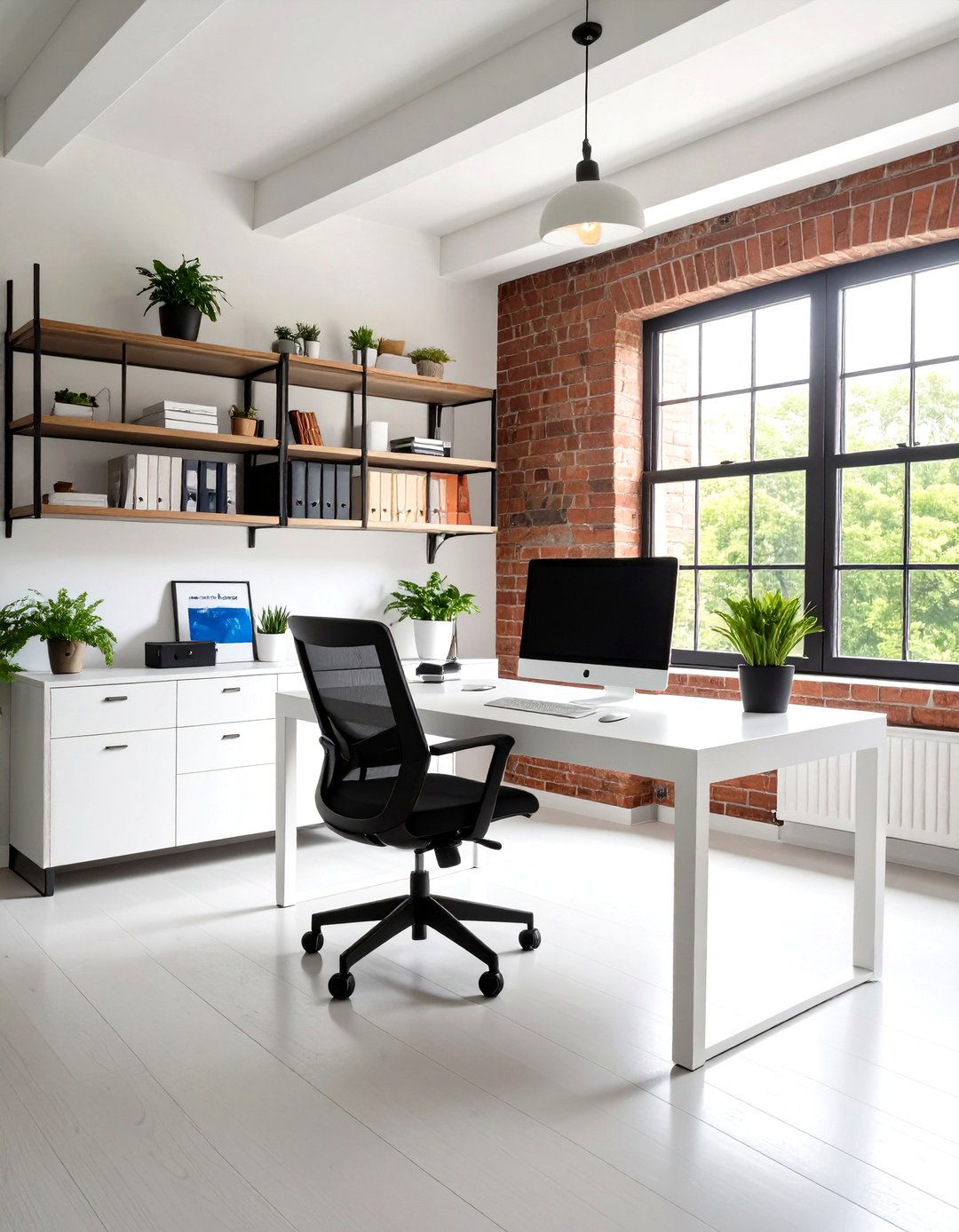
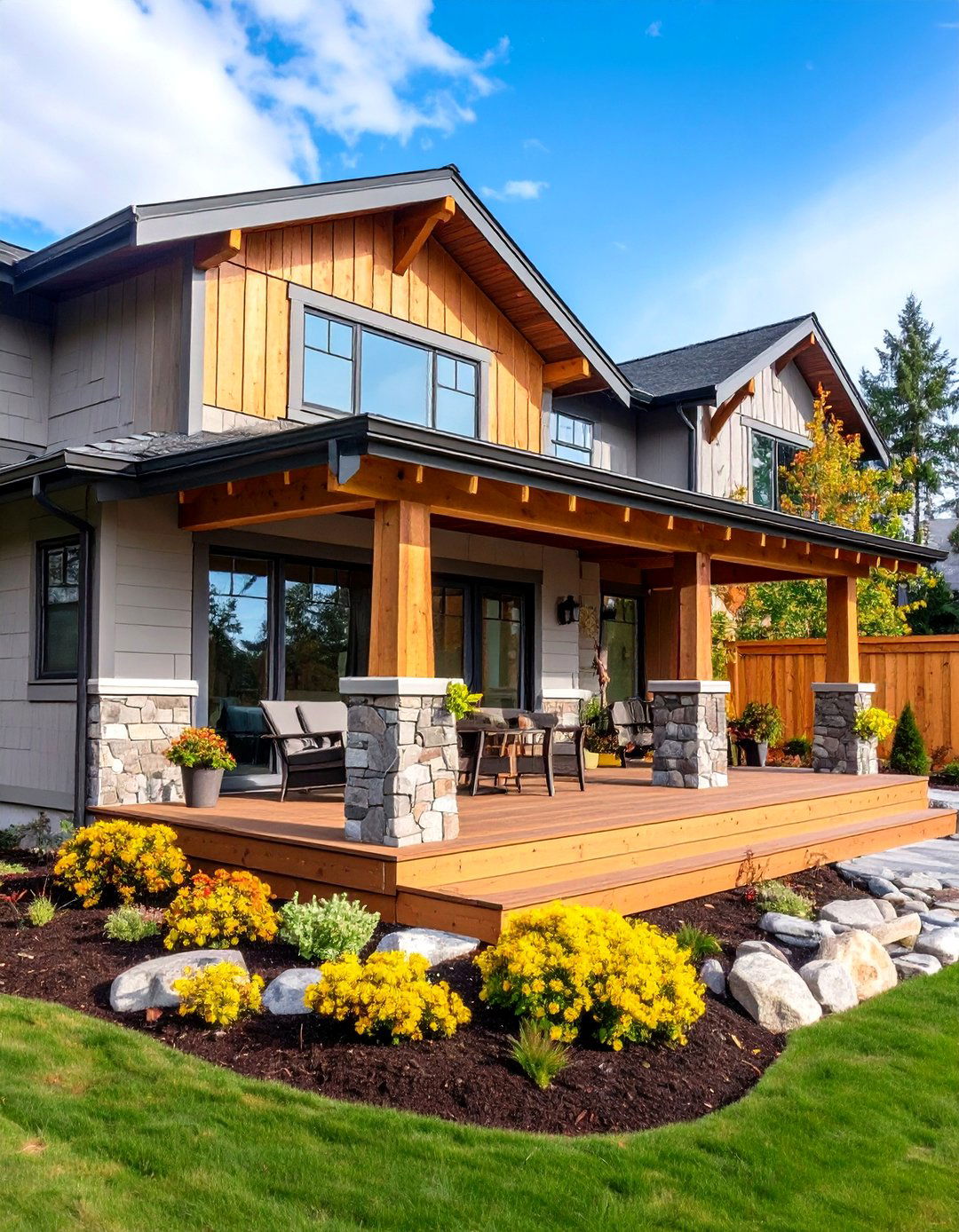
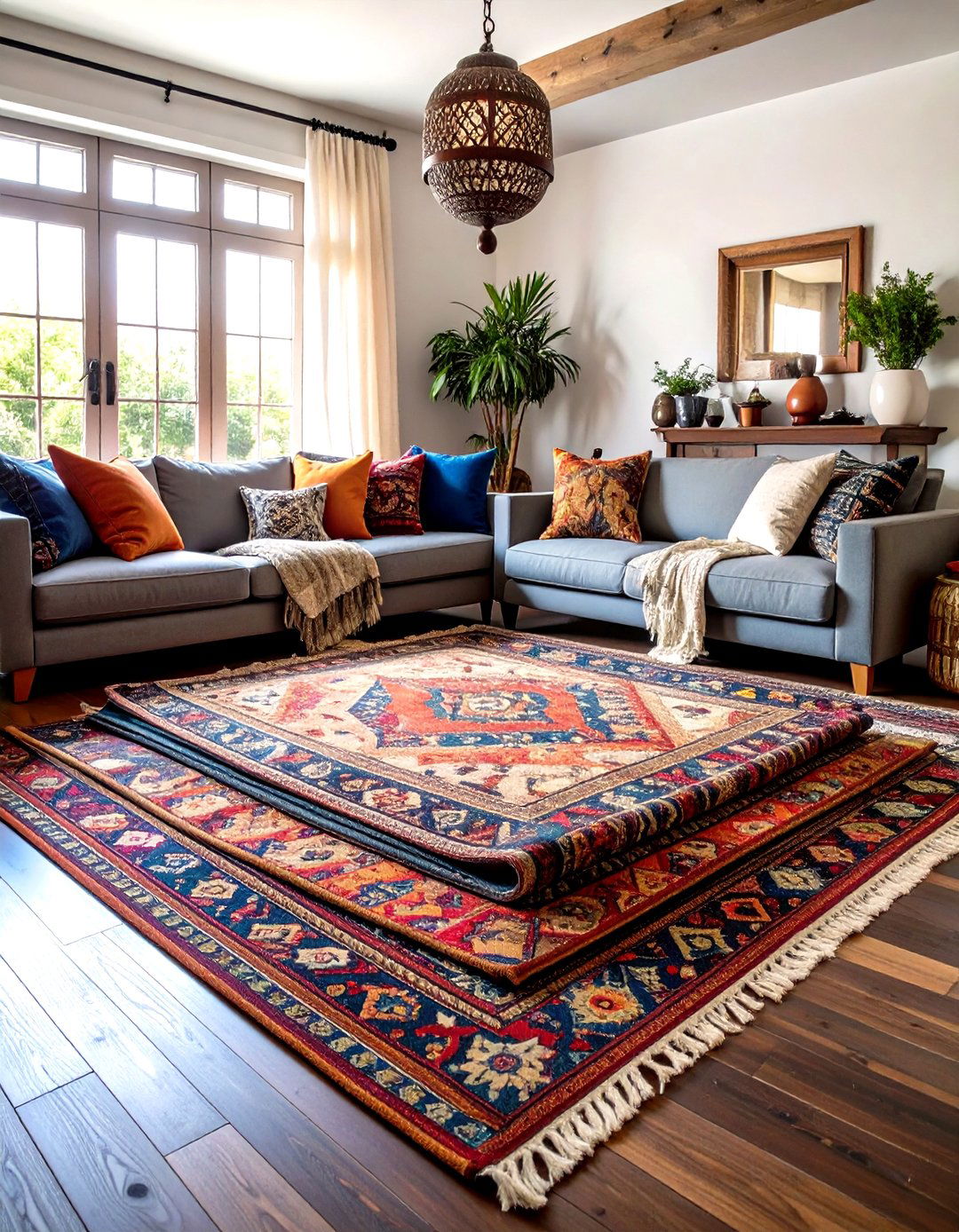

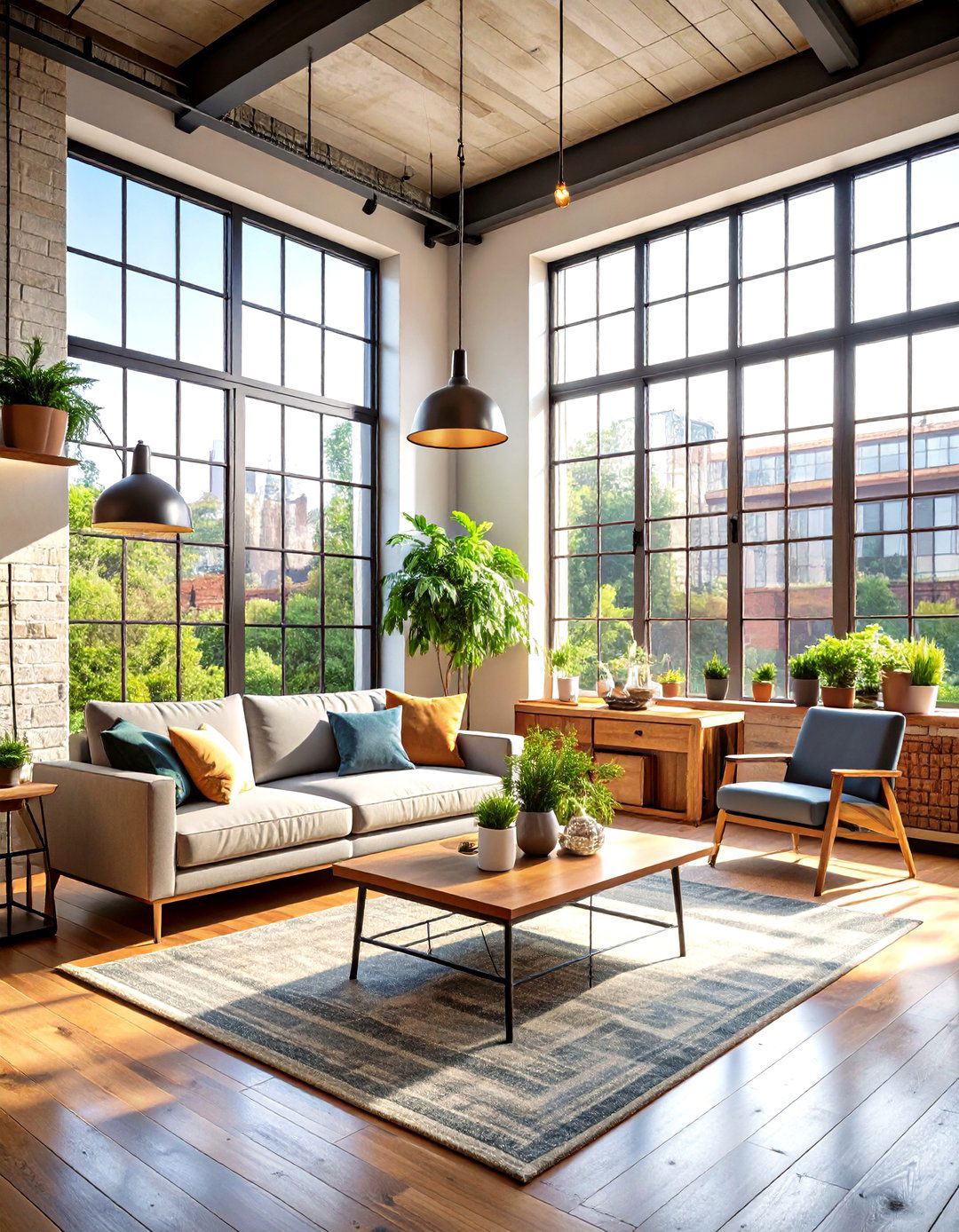
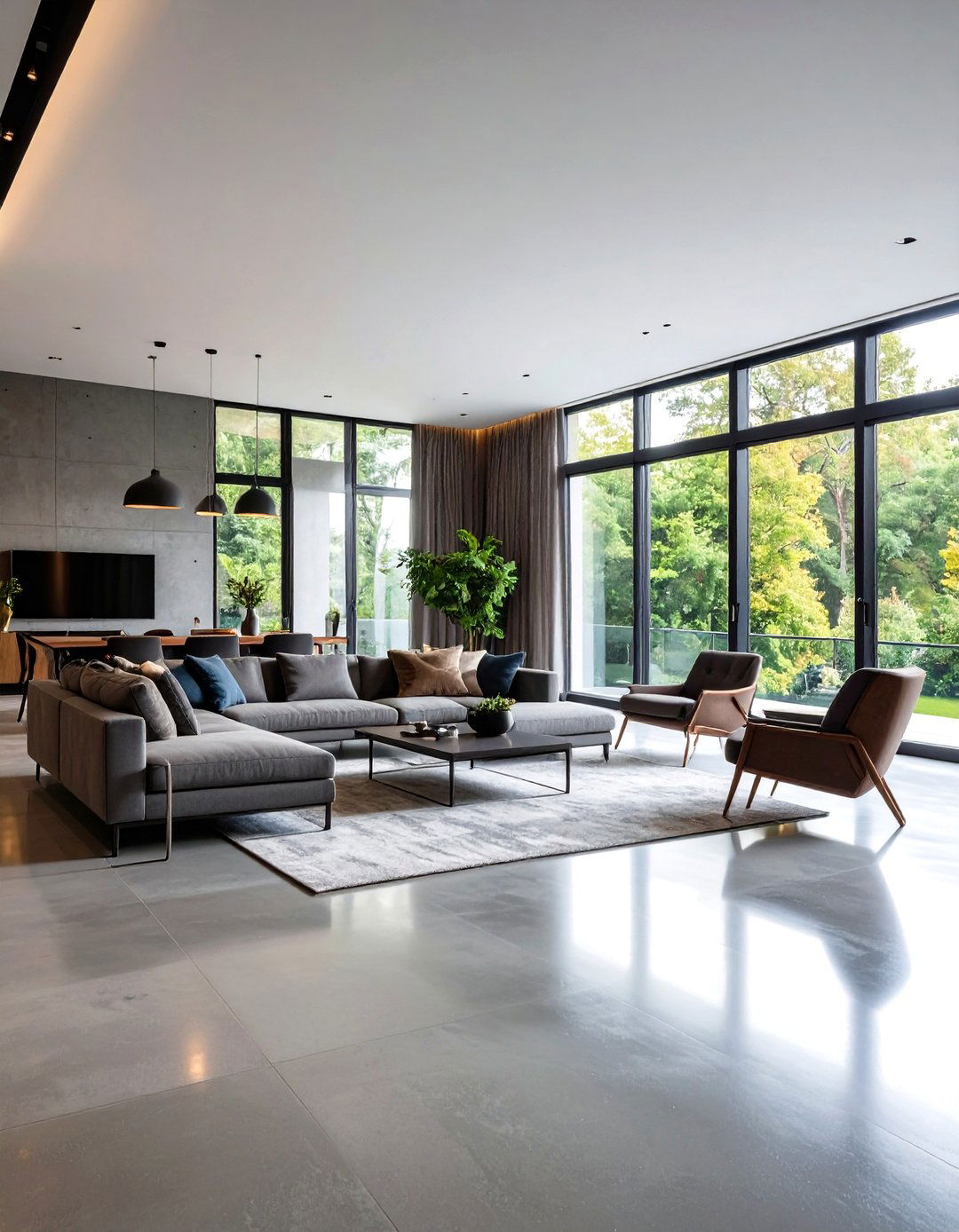
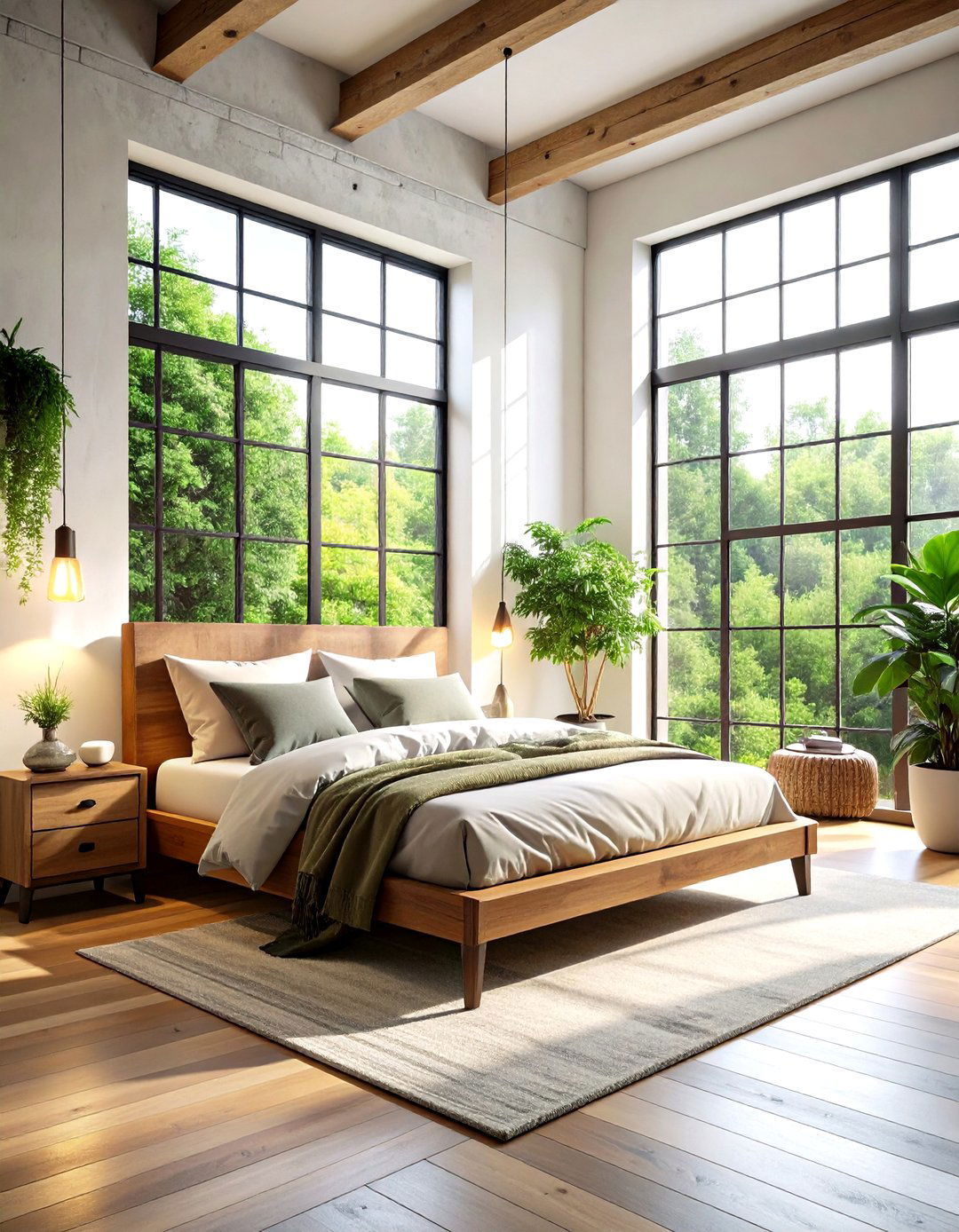
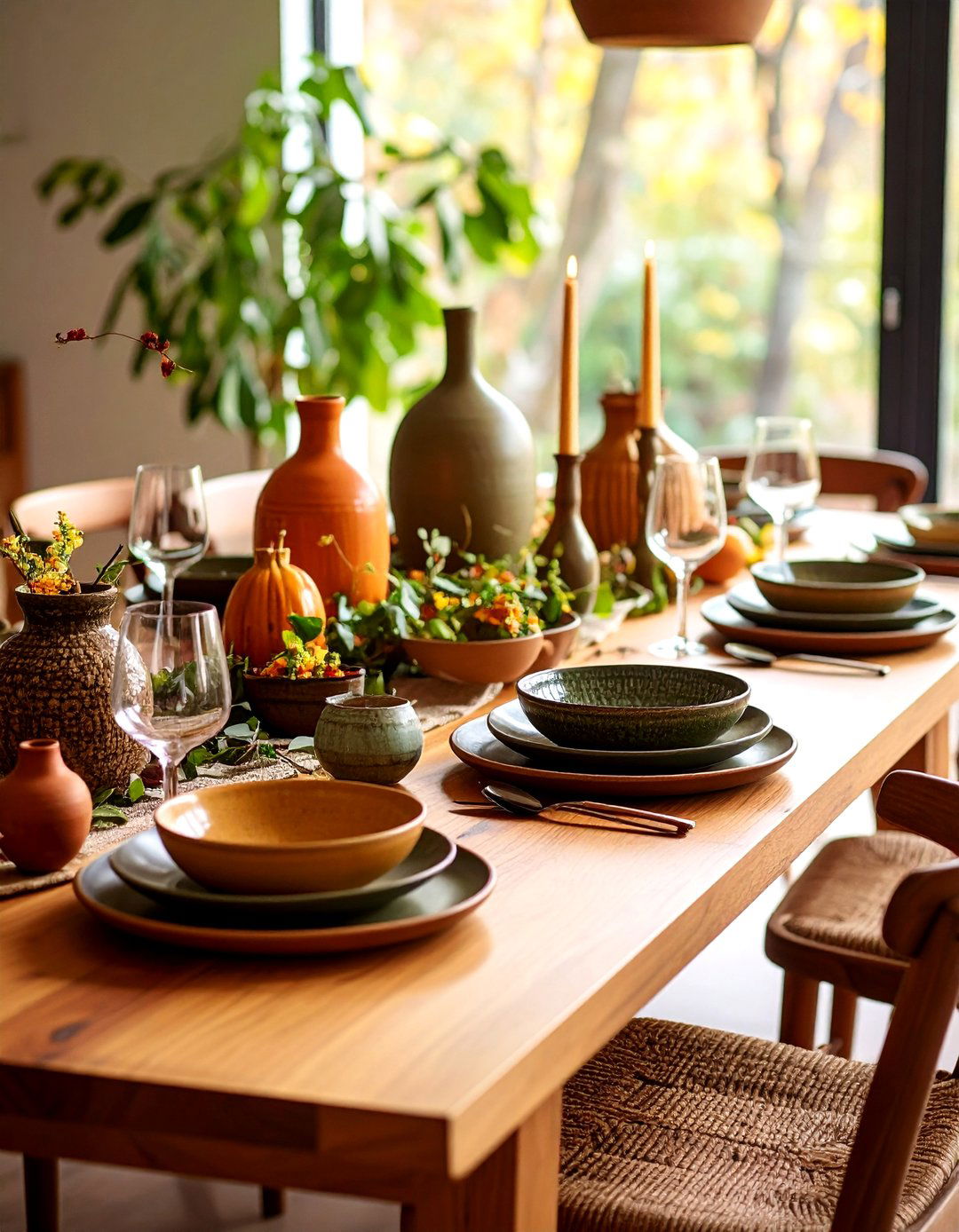

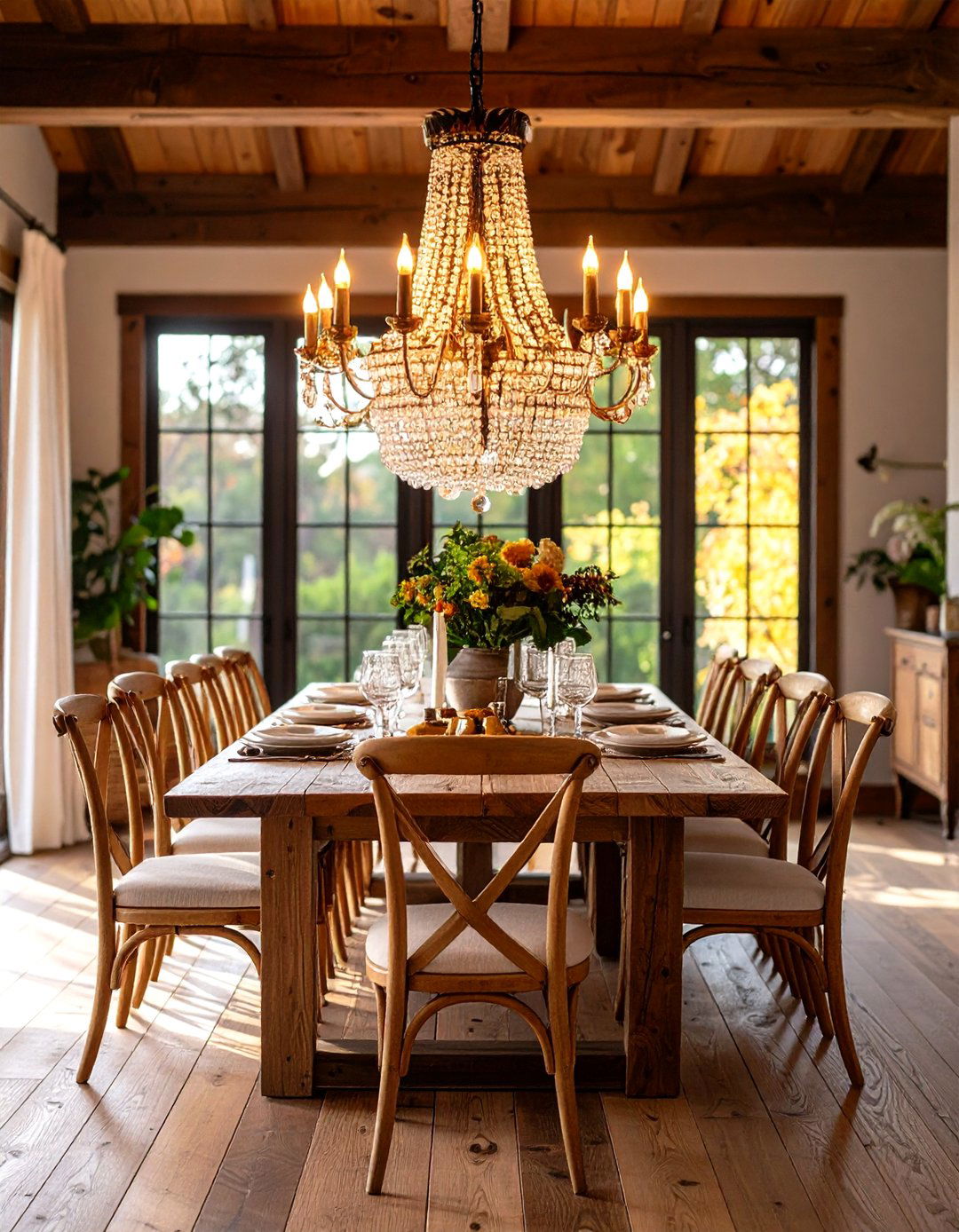
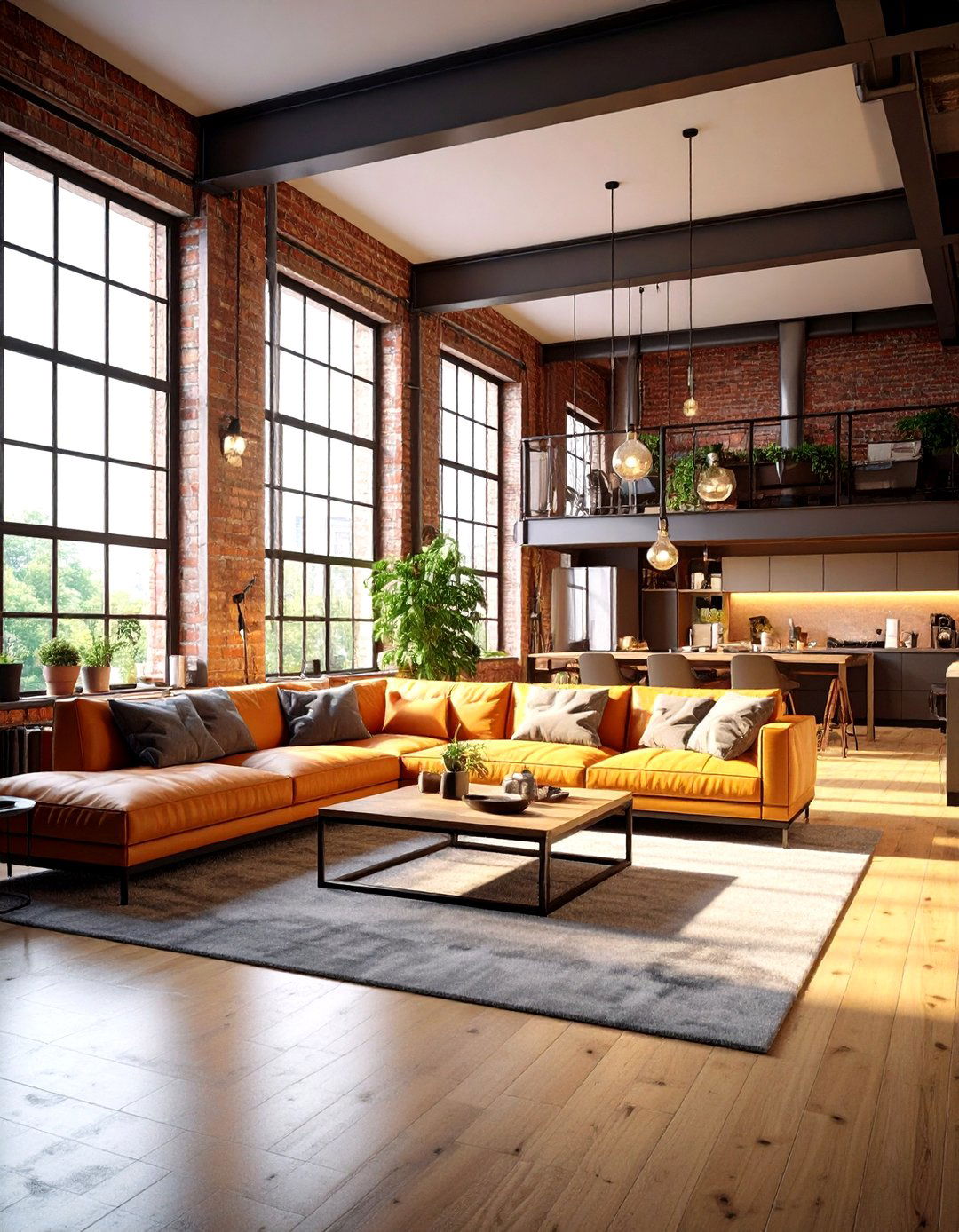
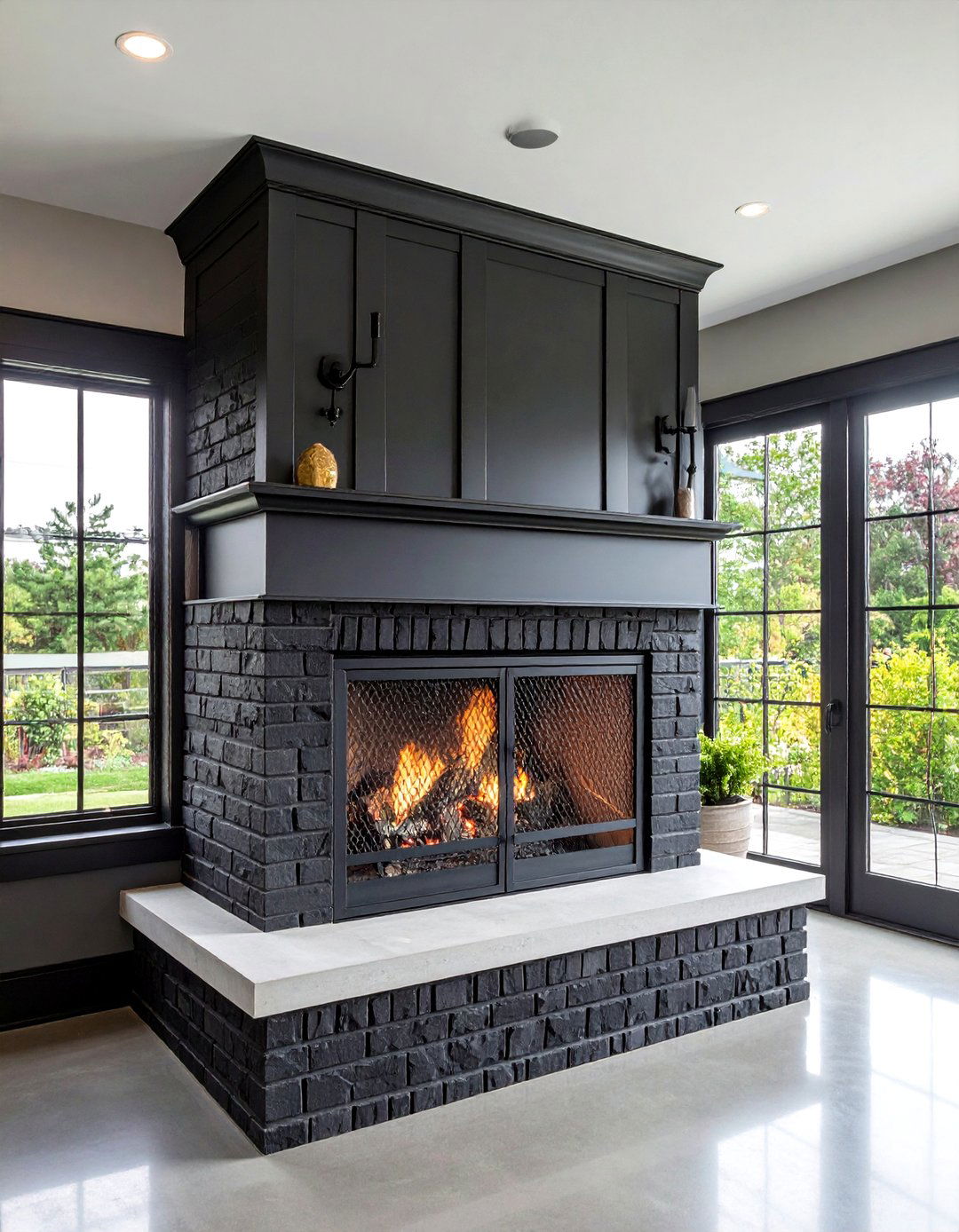
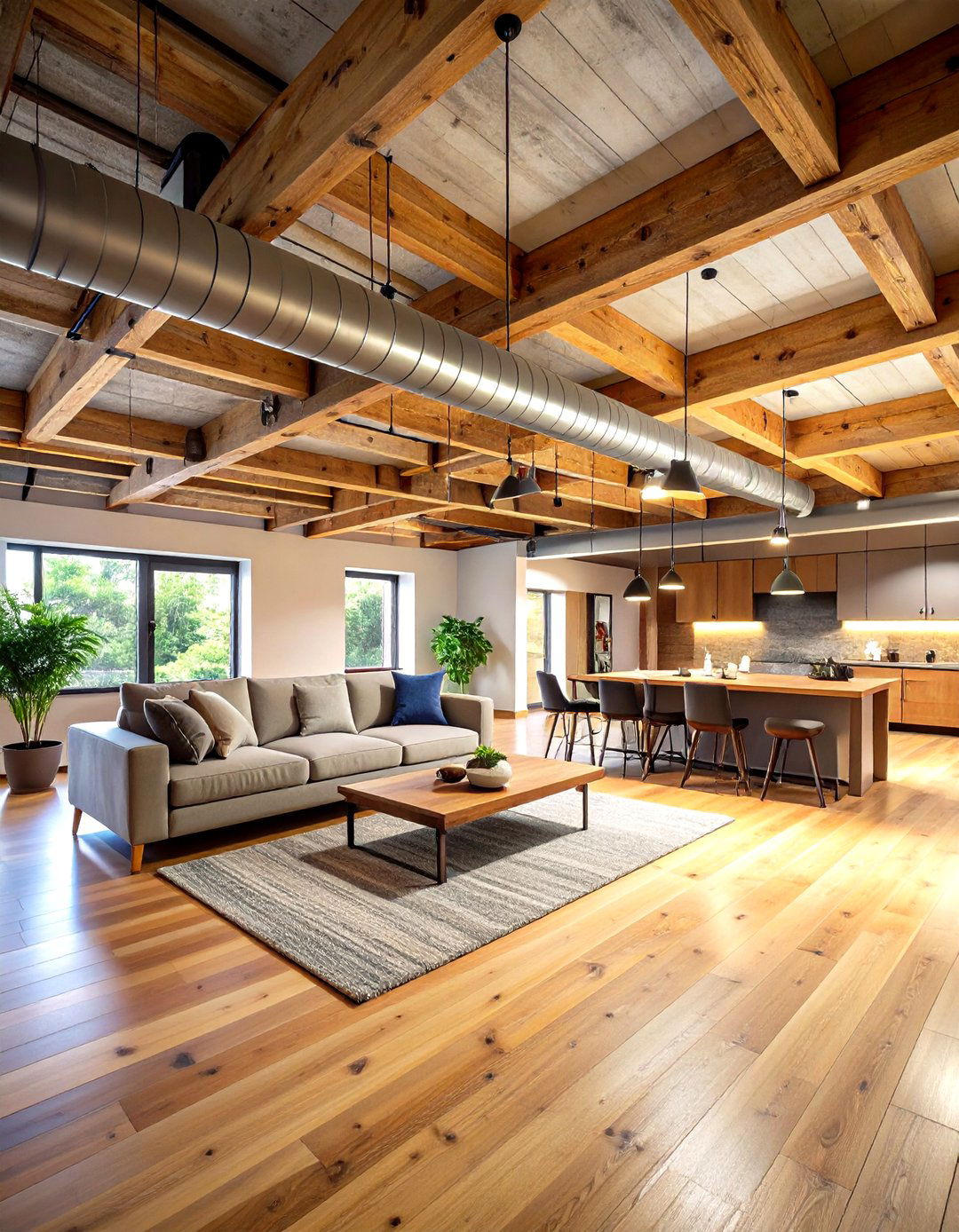
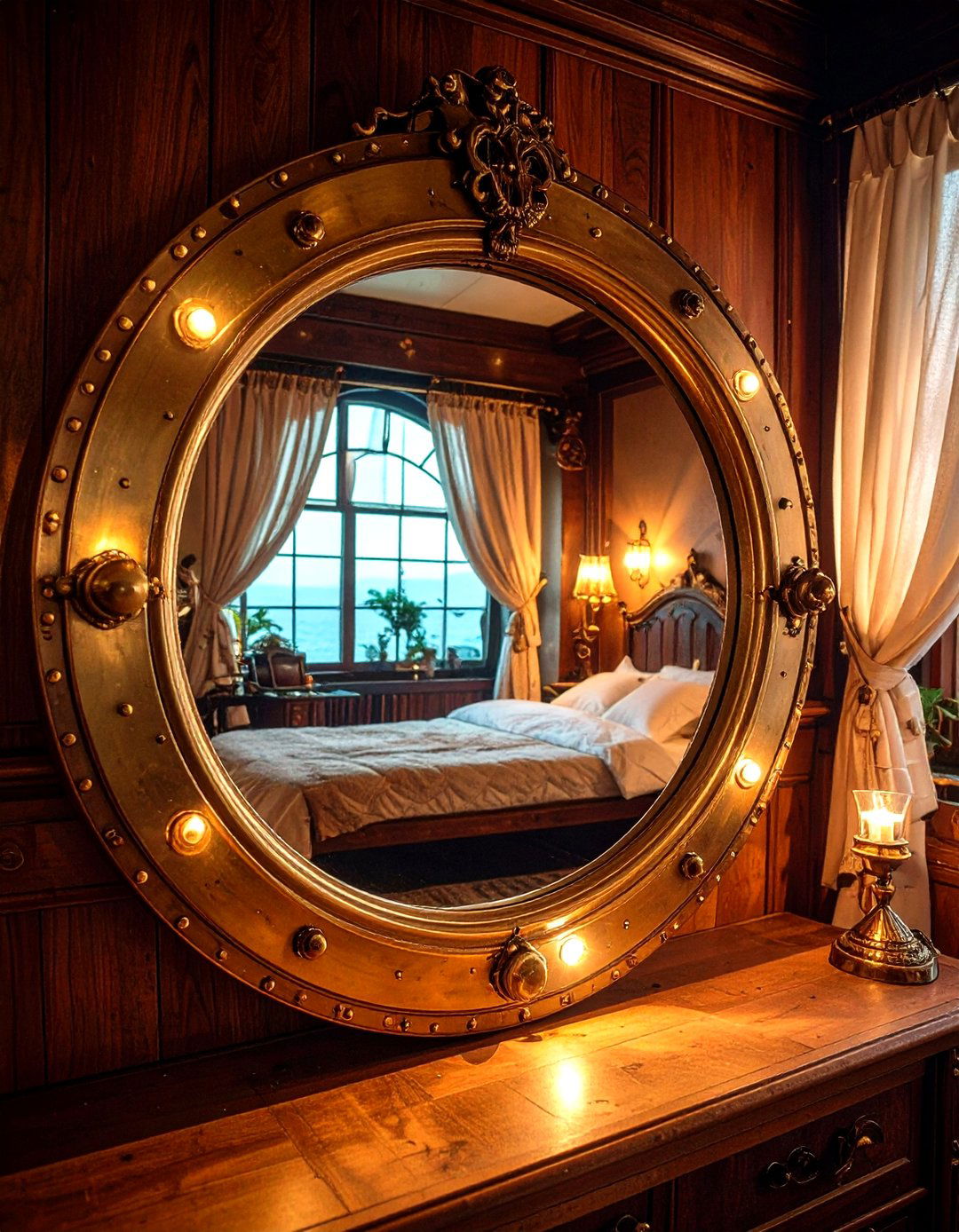

Leave a Reply